A Guide to Places Announcers Should Reference When Joking about Long Home Runs
It's not ideal to hit a ball to Akron from Progressive Field
This past Saturday, in the top of the 2nd inning of a fairly routine game in Cleveland between the Mariners and the Guardians, Julio Rodríguez took a mighty hack on a belt-high first-pitch fastball from Cal Quantrill and whiffed.
This impressed Mariners play-by-play announcer Dave Sims:
“Wo-ho-hooooah! That was a tornado swing! Was he trying to hit that to Akron?”
Akron is south-southeast of Cleveland. I’ve been to Progressive Field twice and I didn’t immediately remember which direction it faces but I was pretty sure it wasn’t south. Sure enough, it actually faces due north.
If Julio did hit the ball to Akron, it would have gone about 30 miles in the wrong direction. Which would be impressive! But still just a very loud strike.
What Julio actually wanted to do was hit it into Lake Erie. Unless you’re a power lefty slicing it just fair down the right field line, the path of any hypothetical uber-long home run at Progressive Field runs into the water within a couple miles.
Now, obviously I’m not trying to harp on Dave Sims for getting this wrong, first and foremost because I’m a big fan of his, but also because a lot of announcers make remarks like this and quite a few of them mess it up.
That said, I also recognize that it’s not reasonable to expect any announcer to memorize the regional geography of every MLB market as it relates to the direction each ballpark faces…
So I’m here to help!
This, as the title states, is a guide to the geographic features MLB announcers should reference when hyperbolizing long home runs.
Let’s get started!
American League East
Baltimore Orioles — Oriole Park at Camden Yards
We’re starting with an interesting one, as Oriole Park already has a commonly referenced geographic feature for this purpose: Eutaw Street lines the eastern limit of the ballpark and is situated perfectly for big lefties to whack a dinger into the adjacent alleyway. They even have plaques for every home run that’s landed there.
But if people have already done it on several occasions, it’s not quite absurd enough for me.
Left: A few thousand feet beyond left-center lies Downtown, and about three miles down the left field line is Johns Hopkins University. If they’re really swingin’ for the fences, Towson is about eight miles north.
Center: Downtown is still in the path, but beyond that lies dozens of square miles of ho-hum suburbia.
Right: That water body at the bottom of the above aerial is the Inner Harbor, and it’s only about 3000 feet from home plate. At his peak, Chris Davis probably could have hit a ball to Chesapeake Bay, about 13 miles out.
Boston Red Sox — Fenway Park
Fenway Park squeezes into a rather small plot of land that wouldn’t be considered viable for a major league park if it was getting built today. Over the Green Monster in left field lies Lansdowne Street, which has seen its fair share of homers on account of only being 335 feet from home plate down the left field line and about 375 feet away in left-center (though, of course, you gotta hit it over the 37’2” wall).
Left: The Charles River can be seen about 1800 feet north of the park, and across the river sits MIT. About three miles out lies Somerville.
Center: The Charles River is still in the path, and if you hit the ball just right, you can land it on the Harvard Bridge 3200 feet away. Bunker Hill is 2.8 miles away.
Right: Downtown is a little over two miles deep of right-center and the Boston Harbor is just over two and a half. I’m pretty sure I remember David Ortiz hitting one to Boston Logan International Airport four miles away, and three miles beyond that is Massachusetts Bay, an inlet of the Atlantic Ocean.
New York Yankees — Yankee Stadium
Situated northeast of Manhattan, Yankee Stadium faces away from all the hustle and bustle and toward a whole lot of townhomes and apartments.
Left: Fordham University is about three miles out to deep left. If Aaron Judge or Giancarlo Stanton are in the box, you might see a drive to left-center land in New Rochelle (10 miles) or even Connecticut (18 miles).
Center: The Bronx Zoo is a little under three miles behind dead center. Beyond that, Eastchester Bay is six miles from the park, Orchard Beach is 7.5 miles away, and Long Island Sound is immediately adjacent to the beach.
Right: Four and a half miles down the right field line lies the East River, and if you scrape the foul pole, you can park it six miles away in Queens. Eastchester Bay remains in the right-center path, but if you can put eight miles behind the ball, you can hit it across the water to Long Island.
Tampa Bay Rays — Tropicana Field
Well crap.
St. Petersburg’s Tropicana Field is the only domed stadium left in the majors, which makes it a little hard to judge where our several-mile home runs are heading off the bat. It’ll also require we puncture a few walls with our mighty power, but most of baseball agrees the Trop needs to be destroyed anyway, so that shouldn’t cause too much of an uproar.
Left: It’s about 8.5 miles from left-center north to Old Tampa Bay, with not much to speak of between the park and the water.
Center: Old Tampa Bay is only about five miles away to dead center. Even better, about 17 miles in that direction is downtown Tampa. Baseball in Tampa: imagine that!
Right: Tampa Bay (which is a separately designated water body from Old Tampa Bay) is about a mile and a half to right field. It’s 15 miles across the water, but there’s not much on the other side.
Toronto Blue Jays — Rogers Centre
Rogers Centre is one of just two MLB parks to face even the slightest bit west, the other located in Houston. Both have retractable roofs for obvious reasons.1
Left: York is a little under eight kilometres deep of left-centre.
Centre: The University of Toronto is about 2.4 kilometres from centre field, Casa Loma is 4.4 kilometres out, and the suburb of Richmond Hill is around 27 kilometres away.
Right: Downtown is only a kilometre from right-centre. Markham is 24 kilometres farther.
American League Central
Chicago White Sox — Guaranteed Rate Field
Ahhh, Guaranteed Rate Field. With its beautiful views of I-90/94 and almost nothing at all distinguishing it from a create-a-park in MLB The Show, you’re sure to have a blast watching the White Sox give up three homers a game!
Left: You’re hitting it into Lake Michigan pretty much no matter what. It’s 1.6 miles down the left field line.
Center: More Lake Michigan, but from this angle, you can also hit it to Indiana; the northwest corner of the state is 7.5 miles from the batter’s box to dead center and the closest land in the state is about 10 miles out to right-center.
Right: It’s only about 4.5 miles down the right field line to the Chicago Skyway, and a little under eight miles to Chicago State University.
Cleveland Guardians — Progressive Field
We’re back to Cleveland! Let’s see where Julio Rodríguez was actually trying to hit it.
Left: Exactly one mile down the left field line lies Cleveland Browns Stadium, and a few blocks away, deep of left-center, is the Rock and Roll Hall of Fame. Just beyond both of those landmarks is Lake Erie.
Center: About a mile and a third to deep center is Cleveland Burke Lakefront Airport. Behind that is more Lake Erie.
Right: Just 3500 feet back of right field is Cleveland State University. After that is a bunch of suburbia, industry, and — you guessed it — Lake Erie.
Detroit Tigers — Comerica Park
Comerica Park gives us the only aerial with two countries in it because, as anyone who’s ever been curious about “Don’t Stop Believin’” knows, “South Detroit” is actually Canada.
Left: It’s a mile and a third down the left field line to the Detroit River and two miles to Windsor, Ontario, Canada.
Center: It’s about 5000 feet beyond dead center to the Detroit River and a little under a mile and a half to Windsor.
Right: From right-center, you’re running straight into the heart of Downtown a couple thousand feet away. Behind the skyscrapers, it’s a mile to the Detroit River and a mile and a half to Windsor.
Kansas City Royals — Kauffman Stadium
Kauffman Stadium is situated near the far eastern limit of Kansas City and it faces even farther east. Welcome to suburbia.
Left: Six miles beyond left field is the Missouri River. If Salvador Pérez hooked it a little down the left field line, he could land it at Worlds of Fun eight miles away, but the amusement park is just across the extended line in foul territory.
Center: About 4.5 miles behind center field is the suburb of Independence, home to the Harry S. Truman Presidential Library.
Right: There’s really not anything immediately noteworthy beyond right field at this park. The suburb of Blue Springs is a little over 11 miles down the line.
Minnesota Twins — Target Field
Situated just west of downtown Minneapolis, Target Field has plenty of landmarks for power bats to target beyond its outfield walls.
Left: It’s about 3500 feet to the Mississippi River and just a bit farther to Nicollet Island. If Harmon Killebrew’s in the box, he might hit one all the way to St. Anthony (four miles) or even White Bear Lake (15 miles).
Center: Oh man, too many to list. The Stone Arch Bridge across the Mississippi River is 1.2 miles away, the University of Minnesota is a little over two miles to right-center, and the State Fairgrounds are five miles to dead center. A skilled hitter could land a ball on CHS Field, the home of Minnesota’s Triple-A affiliate, the St. Paul Saints, 9.7 miles behind right-center in downtown Saint Paul. And if you really put a jolt into the ball, you could fly it all the way to Wisconsin, 25 miles away, across the St. Croix River.
Right: U.S. Bank Stadium, built on the former site of the Metrodome, is 1.1 miles out to right. Farther out, it’s about four miles to the Mississippi River and five to Minnesota’s other Division I institution, St. Thomas University.
American League West
Houston Astros — Minute Maid Park
Minute Maid Park is the other slightly west-oriented park, which — as you can see — gives power bats plenty of gigantic freeway interchanges to aim for.
Left: Everything’s bigger in Texas so let’s up the distances here. It’s 28 miles from left-center to Tomball and 83 miles to Texas A&M in College Station.
Center: It’s 28 miles from straightaway center to The Woodlands and 67 miles to Sam Houston State University in Huntsville.
Right: From right-center, it’s about 15 miles to George Bush Intercontinental Airport. And since I mentioned Sam Houston, I’d be remiss if I snubbed Stephen F. Austin State University, 135 miles down the right field line in Nacogdoches.
Los Angeles Angels — Angel Stadium
Angel Stadium is surrounded on all sides by what feels in person like two miles of parking lot, but hey, if you clear the pavement, there are some nice suburbs in the flight path.
Left: Straight down the left field line, it’s about 5.5 miles to Cal State Fullerton.
Center: Honda Center is 3500 feet out to center and Yorba Linda is about 7.5 miles out. The way Mike Trout’s hitting, he could probably smack one over the mountains to Chino Hills, 15 miles away.
Right: There’s not much immediately east of the park. It’s 19 miles down the right field line to Corona, and if Shohei Ohtani really puts a charge into one, it could fly 31 miles out to right-center and land in Riverside.
Oakland Athletics — Whatever the Coliseum is called this week
I’m gonna have to rewrite this segment in a few years and I sure hope the updated blurb is about a new Oakland stadium and not a Las Vegas one.
Left: The Berkeley Hills are about five miles from left-center.
Center: It’s eight miles from center field to Saint Mary’s College in Moraga. Farther out is Mt. Diablo, 18 miles away.
Right: Three miles down the right field line is the Oakland Zoo, and San Ramon sits 13 miles away, over the hills.
Seattle Mariners — T-Mobile Park
It’ll always be Safeco to me.
Left: Julio Rodríguez should have no trouble hitting it 1500 feet to Lumen Field, but the M’s might need to bring Nelson Cruz back to reach Seattle University (1.5 miles to left-center), Capitol Hill (2.5 miles to left), or the University of Washington (4.5 miles to left, across Portage Bay).
Center: The International District is 3000 feet behind center field, but there’s not much beyond that until you reach Lake Washington 3.25 miles away.
Right: Down the right field line, Lake Washington is 2.25 miles away. Ken Griffey Jr. could have hit tons of homers across the water to Bellevue (six miles) if he’d played at this park in his prime.
Texas Rangers — Globe Life Field
The Rangers recently moved across the street to a new ballpark with a retractable roof. Having visited the former ballpark on what felt like a 100° day in mid-May, I can confirm that this was necessary, and having visited the new park in early August, I can also confirm the difference is night and day.
Left: Home plate of the Rangers’ former ballpark, now called Choctaw Stadium, is only about 1700 feet to left field out of the new one. DFW International Airport is 10 miles in the same direction.
Center: Six Flags Over Texas is a mile beyond dead center. Irving is about nine miles away.
Right: Downtown Dallas is about 17 miles down the right field line.
National League East
Atlanta Braves — Truist Park
The Braves built their new ballpark out in the middle of nowhere, but at least they had the good sense to face it toward the city proper.
Left: About six miles down the left field line lies Buckhead, while Decatur is 12.5 miles out to left-center.
Center: All the good bits of central Atlanta are somewhere between 8.5 and 10.5 miles past deep center. What used to be Turner Field — but is now known as Center Parc Credit Union Stadium and used for Georgia State football — sits 11.6 miles away.
Right: Better watch out! Sending a ball 17 miles to right-center will put it in the flight path of Hartsfield-Jackson Atlanta International Airport, the busiest airport in the world.
Miami Marlins — loanDepot Park
Unfortunately, no matter how hard you hit a ball at loanDepot Park, you can no longer hit the home run sculpture. Bring it back, you jerks!
Left: Down the left field line, it’s about 2.25 miles to Biscayne Bay, 2.5 miles to Dodge Island, five miles to South Beach, and 5.7 miles to the Atlantic Ocean.
Center: Biscayne Bay is 2.4 miles out to center, followed by Virginia Key (4.5 miles) and the Atlantic Ocean (5.2 miles).
Right: Well, what do you know? More Biscayne Bay, 2.3 miles down the right field line. Farther out are Key Biscayne (5.9 miles) and, yep, the Atlantic Ocean (6.8 miles).
New York Mets — Citi Field
Citi Field comes oh-so-close to having another active MLB park in its immediate extended field. Yankee Stadium is a little ways foul of the left field pole 6.5 miles away. C’est la vie.
Left: Just over 1500 feet down the left field line is Flushing Bay, and a mile and a quarter away is LaGuardia Airport. Across the bay, 3.4 miles out, is the Bronx. Take note, Pete Alonso.
Center: Flushing Creek spills into Flushing Bay about 3000 feet out to center field. It’s about 2.3 miles to Powell Cove of the East River and 3.5 miles across the river to the Bronx.
Right: Just east of a large freeway interchange and 3100 feet down the right field line sits Flushing Creek. Beyond that lies East River once again (3.6 miles), as well as the very eastern tip of the Bronx: Fort Schuyler (4.4 miles).
Philadelphia Phillies — Citizens Bank Park
All of Philadelphia’s major professional sports teams play on the southern edge of the city,2 and Citizens Bank Park faces almost directly north into the heart of the city. This gives us great skyline views and plenty of landmarks for super long home runs to smash.
Left: About 3.5 miles clear of left-center, across the Schuylkill River, is the University of Pennsylvania with its famed basketball arena The Palestra. Of course, across the street from Penn is Drexel University. Back on the east side of the river, 4.2 miles from left-center is the Philadelphia Museum of Art, the stairs to which you probably recognize as the Rocky Steps.
Center: All of the Old City icons are just over three miles past center field, meaning Bryce Harper could hit a ball hard enough to ring the actual Liberty Bell while the sound effect plays throughout the park to celebrate his homer. Additionally, Temple University can be found a little over five miles down Broad Street.
Right: It’s two miles down the right field line to the Delaware River, which means Camden, New Jersey, is about 2.5 miles away.
Washington Nationals — Nationals Park
Situated near the confluence of the Anacosta River and Washington Channel, Nationals Park faces north toward the wide sea of streets built at funky angles on purpose.
Left: The U.S. Capitol Building is 1.2 miles past left-center, immediately adjacent to the Library of Congress and the U.S. Supreme Court. A half-mile beyond these landmarks sits Union Station.
Center: Gallaudet University sits 2.5 miles beyond dead center. The Maryland border is five miles out.
Right: There’s not much of note out to right field, and there’s soon to be even less, as RFK Stadium (2.25 miles away) is slated for demolition this year or next. The stadium that functionally replaced it, FedExField, is eight miles down the right field line in Maryland.
National League Central
Chicago Cubs — Wrigley Field
If I didn’t tell you what state you were looking at here, would your first guess be Illinois? It’s decently common for righties to hit dingers onto Waveland Avenue to the north and for lefties to hit them onto Sheffield Avenue to the east. Let’s dream a little bigger.
Left: Loyola University Chicago is situated 3.5 miles to deep left. If Ernie Banks comes back to life and steps into the batter’s box, he could scrape the left field pole and power it 7.6 miles to Northwestern University in Evanston. Just north of that is Lake Michigan.
Center: It’s 1.6 miles to Montrose Beach, also of Lake Michigan.
Right: You’ll never guess where this ball’s going (4700 feet to Lake Michigan).
Cincinnati Reds — Great American Ball Park
The wide majority of this aerial shows Kentucky, as Great American Ball Park sits on the north bank of the Ohio River and faces the Bluegrass State. The river is about 700 feet from home plate and it’s not unheard of for long home runs to reach it on a bounce (Adam Dunn’s done it). But what if someone hit one to Kentucky?
Left: Across the river down the left field line lies Newport. Funnily enough, if one was to put enough oomph into one, they could hit one back across the Ohio River and land four miles away at Cincinnati’s Lunken Airport.
Center: It’s Newport here too.
Right: Down the right field line, just across the river is Covington. Meanwhile, Northern Kentucky University is a little over five miles deep of right field.
Milwaukee Brewers — American Family Field
Well, would you look at that: an aerial of a retractable-roof stadium where the roof is actually open.
Left: The Historic Third Ward is 3.5 miles down the left field line, and just beyond it lies Lake Michigan.
Center: Six miles past right-center is General Mitchell International Airport. A little over nine miles away is Lake Michigan.
Right: It’s Prince Fielder’s time to shine. A whole 23 miles to right field, you’ll find Racine. Then Kenosha, 31 miles away. And last but not least, the Illinois state line is 38 miles down the right field line.
Pittsburgh Pirates — PNC Park
PNC Park was practically built for homers to land in the Allegheny River beyond right field. It’s already happened 67 times, and five of those have landed in the water on the fly.3 But what about that other river to the south?
Left: A mile down the left field line, across the Allegheny, is the Strip District. To left-center, it’s 2.5 miles to the University of Pittsburgh and 3.5 miles to Carnegie Mellon University. In the right era, Ralph Kiner likely could have hit one out of the entire city, 6.5 miles away to Wilkinsburg.
Center: Downtown Pittsburgh has the Penguins’ PPG Paints Arena almost exactly one mile out to deep center. Across the street from the arena is Duquesne University, and just beyond that is yet another river, the Monongahela, across from which is the South Side.
Right: Across the Allegheny and over the beautiful Pittsburgh skyline, it’s only about 5000 feet down the right field line to the Monongahela River. Farther out, it’s about 2.5 miles from home plate to Mt. Oliver.
St. Louis Cardinals — Busch Stadium
As with division rival Cincinnati, most of the territory in this aerial belongs to another state: Illinois. But you’re all just wondering how far away the Gateway Arch is, so I’ll cut to the chase.
Left: Precisely 4000 feet down the left field line is The Dome at America’s Center, formerly known as Edward Jones Dome and formerly the home of the NFL’s St. Louis Rams.4 To left-center, it's a little under three miles across the Mississippi River to Brooklyn, Illinois.
Center: It’s about 2500 feet to the Gateway Arch. Across the Mississippi River, the ball could fly 3.6 miles and land on the track of World Wide Technology Raceway, home to NASCAR’s Enjoy Illinois 300. It could even fly 7.5 miles to the Cakohia Mounds.
Right: To right field, across the Mississippi River is East St. Louis (2.3 miles) and not much else.
National League West
Arizona Diamondbacks — Chase Field
Where could a batter hit a ball from Chase Field: the second home field of the Los Angeles Dodgers?
Left: Down the left field line, it’s about nine miles to Glendale and 13.5 miles to Peoria.
Center: Almost right down the middle of center field, 10 miles beyond the park lies North Mountain.
Right: More mountains because most of Phoenix’s suburbs are either northwest or southeast of the city proper. Piestewa Peak is 7.5 miles out to right.
Colorado Rockies — Coors Field
Geez, I never realized how ugly the area just north of Coors Field is. Let’s hope there are some cool spots outside of the immediate vicinity; the high altitude should let hitters reach them more easily.
Left: From left-center, Westminster is six miles away and Broomfield is 12.5 miles away. Back in the day, Nolan Arenado used to hit ‘em all the way to Boulder, 23 miles down the left field line.
Center: There’s not much immediately north of Denver, but Fort Collins exists 57 miles away. In case you’re wondering how far a ball would have to travel to reach Wyoming: about 86 miles.
Right: Out to right-center, it’s 18 miles to Brighton and 48 miles to Greeley.
Los Angeles Dodgers — Dodger Stadium
Dodger Stadium is located in Chavez Ravine, which — like the vast swaths of land the stadium faces — should still be a residential area.
Left: Glendale lies a little under five miles past the left field pole.
Center: Out to dead center, it’s 7.3 miles to the Rose Bowl.5 The San Gabriel Mountains tower beyond the stadium (12 miles).
Right: Everyone associates the Rose Bowl with Pasadena but it’s a ways away from the city center, which is about 7.5 miles past right field. The San Gabriel Mountains, 12 miles away, might as well be a brick wall here too.
San Diego Padres — Petco Park
You ever play MLB the Show and see all the airplanes flying across the screen from right to left while you’re up to bat at Petco Park? Let’s try to hit ‘em.
Left: Down the left field line, you could hit it a mile and a half into North San Diego Bay, but why do that when you can hit it two miles to San Diego International Airport? About 5.5 miles away is SeaWorld, 11 miles away is La Jolla, and 12 miles away is the actual sea: the Pacific Ocean.
Center: Hitting the ball anywhere between one and 2.3 miles to deep center will park it in the famed San Diego Zoo. Beyond that, it’s even more airports: Montgomery-Gibbs (7.5 miles) and the Marine Corps Air Station Miramar (11.5 miles).
Right: The San Diego Zoo remains in the right field path. The campus of San Diego State University is in foul territory, but their new Snapdragon Stadium (5.7 miles away) isn’t.
San Francisco Giants — Oracle Park
A Giants home run into McCovey Cove beyond the tall right field wall at Oracle Park is known as a Splash Hit. There have been 98 Splash Hits in approximately 1817 home games since the park opened in 2000.6 I've been to Oracle Park exactly once. I saw Splash Hit #78.7
Left: Well, no matter what direction you hit the ball from this park, it’s gonna have to cross the San Francisco Bay. Here, Oakland lies about 6.5 miles from left-center and Berkeley sits nine miles down the left field line.
Center: Center field has the shortest path to dry land on the other side of the bay, as it’s only 3.2 miles to the shore of Alameda Island. In addition, Oracle Park is the only park in the major leagues that faces another active MLB park in its moderate vicinity…for now: the Coliseum is 10.5 miles out to right-center.
Right: Finally, ten miles beyond right field is Oakland International Airport.
And that’s all 30! Thanks for joining me on this journey. I sincerely hope you learned nothing important along the way.
In case it’s not obvious: a lot of baseball games are played as the sun is setting in the west, and nobody wants to stare at a giant ball of fire as they’re trying to hit a 102 mph fastball.
Except for the Philadelphia Union of Major League Soccer, who play at Subaru Park all the way out in Chester.
More correctly, four of them reached the water and one of them landed in a boat sitting on the water. The hitter: Pedro Álvarez.
It’s now the home of the XFL’s St. Louis Battlehawks, but who cares?
No wonder no one attends UCLA football games!
That’s 81 games x 22 normal seasons, 30 games in the shortened 2020 season, and five games so far this season. I’m sure there’ve been a few odd Giants home games that weren’t at Oracle Park, but I don’t feel like tracking them all down.
May 15, 2018, Brandon Belt off Tyler Mahle of the Cincinnati Reds





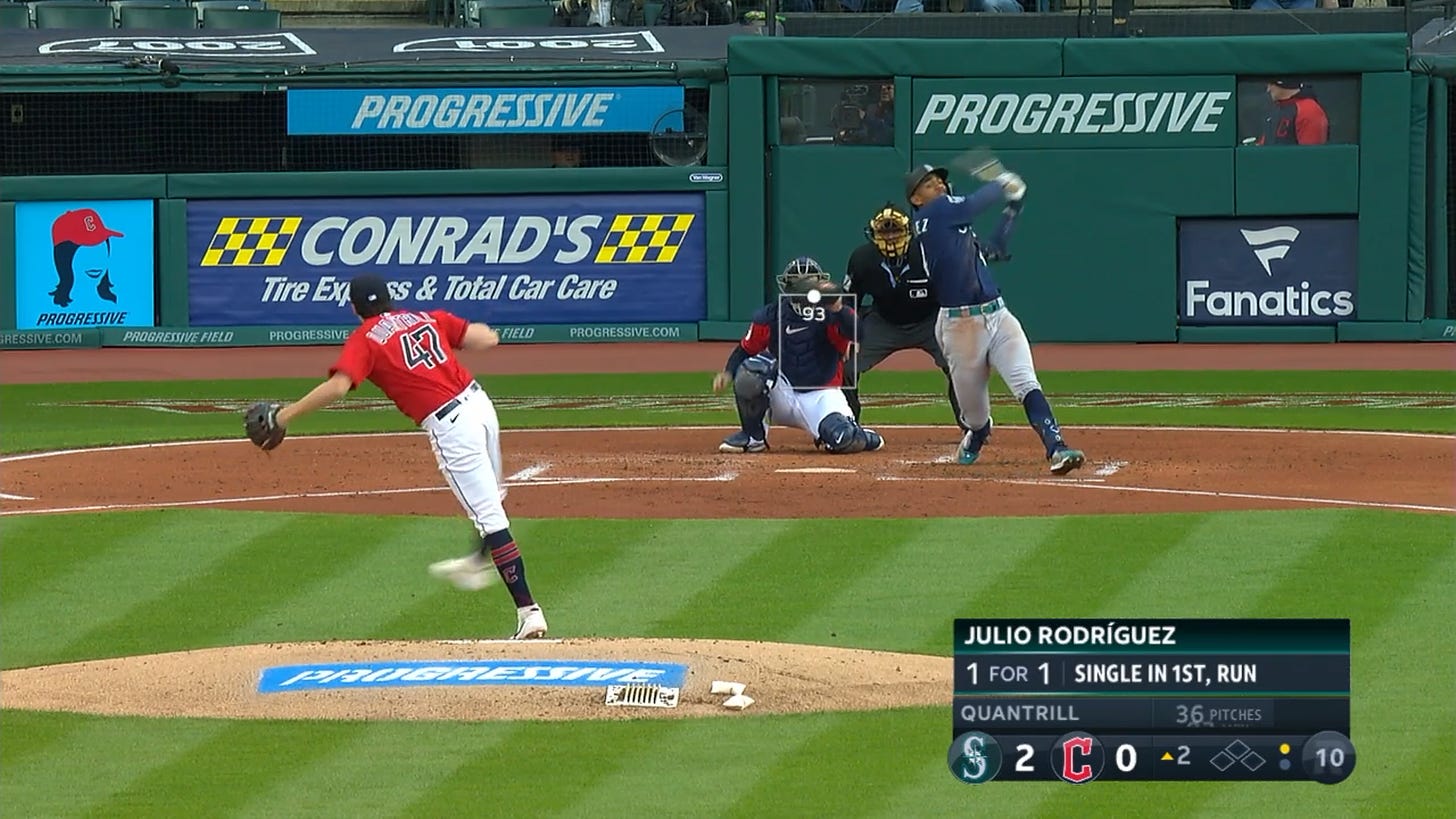
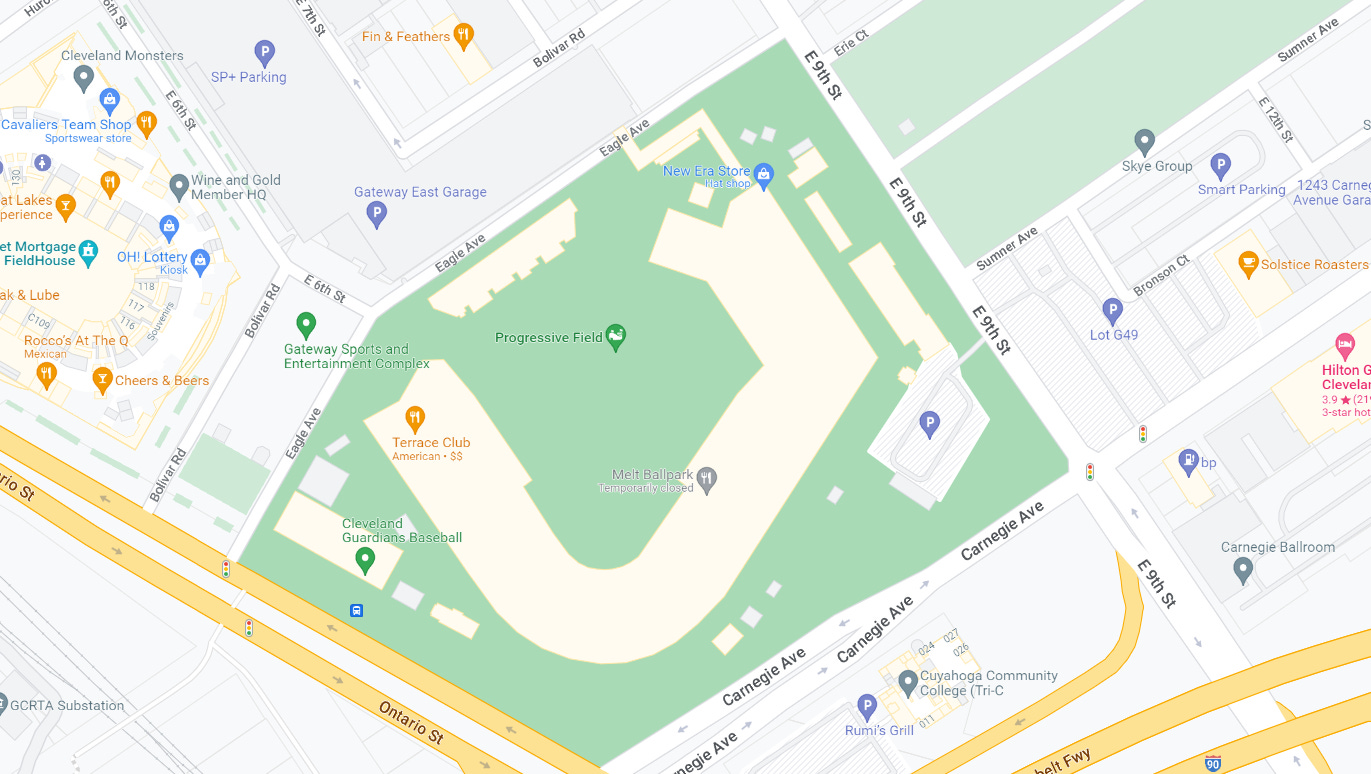
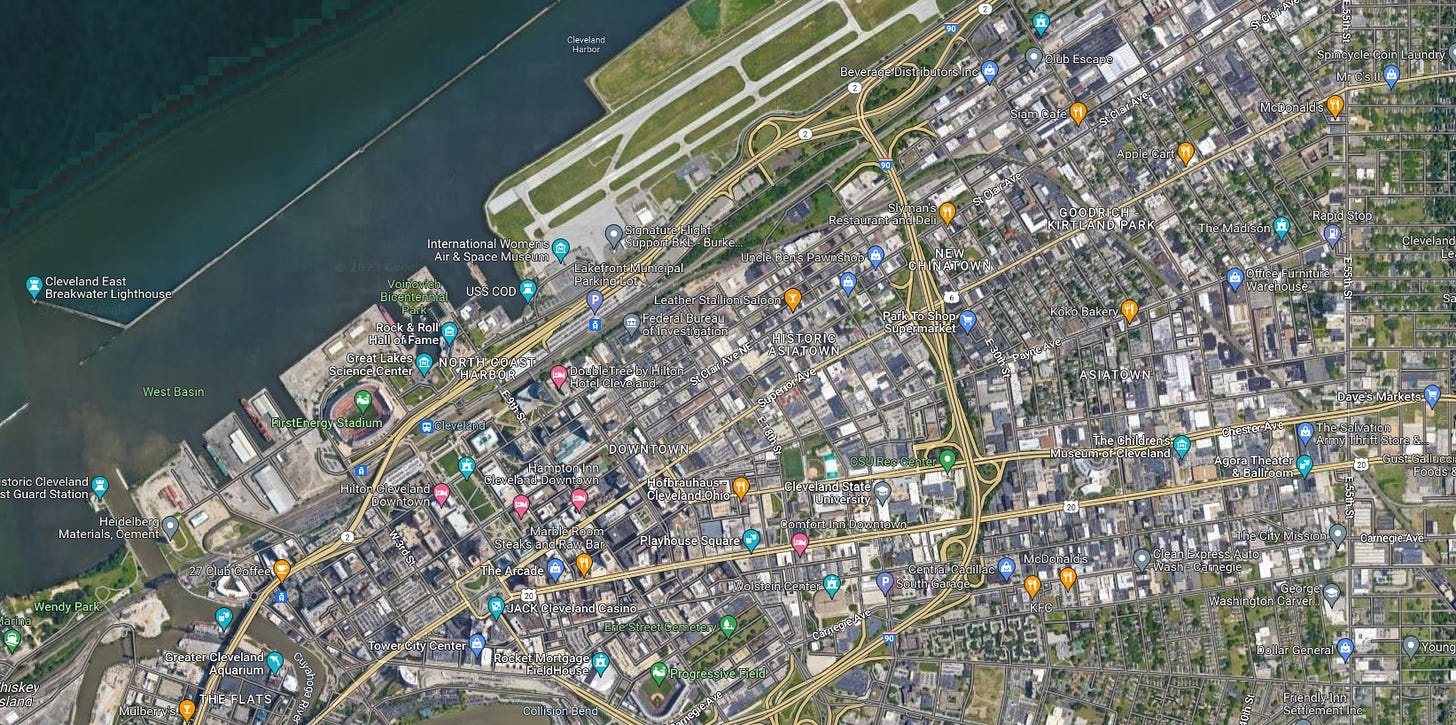
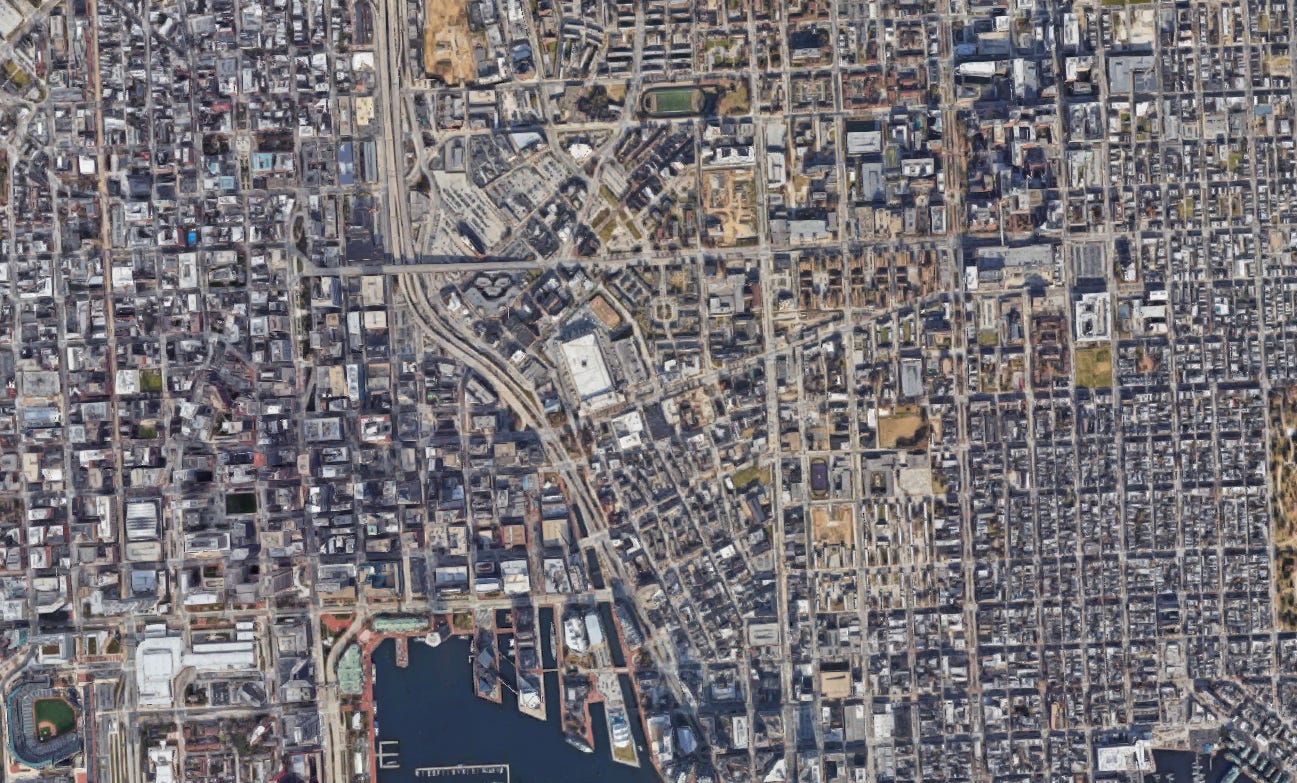

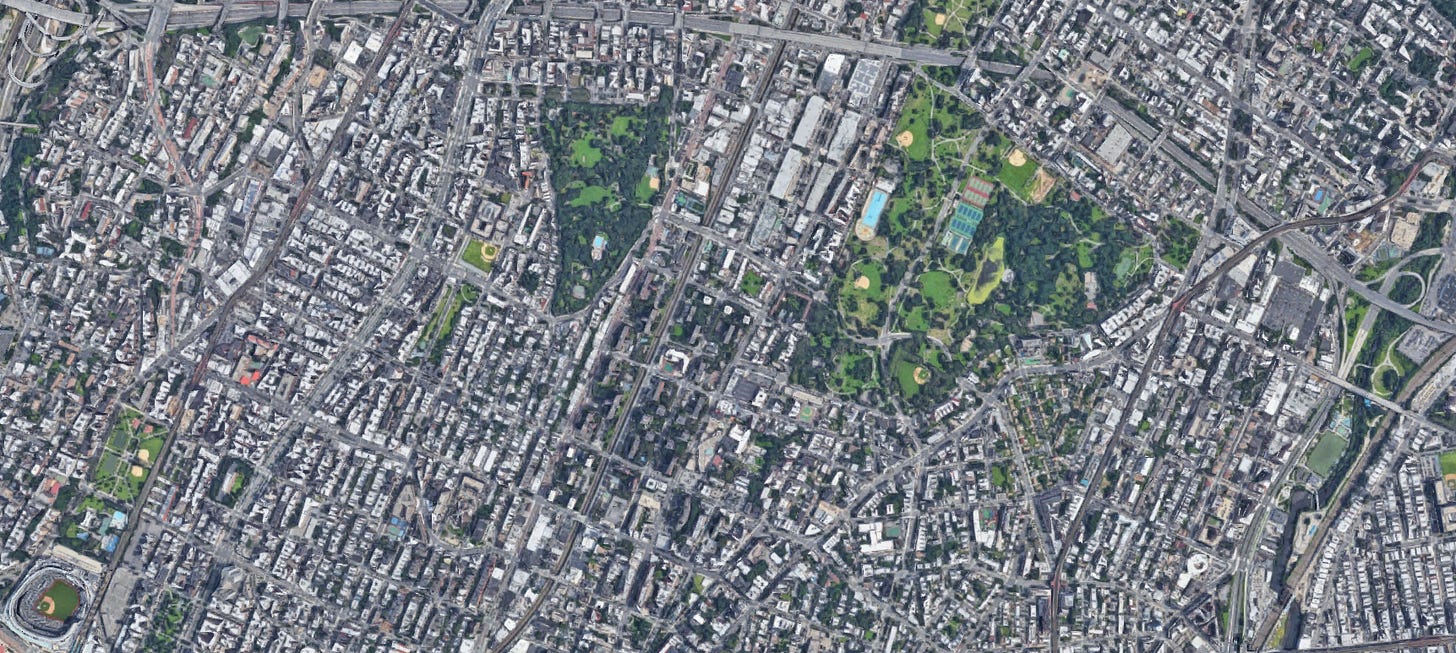
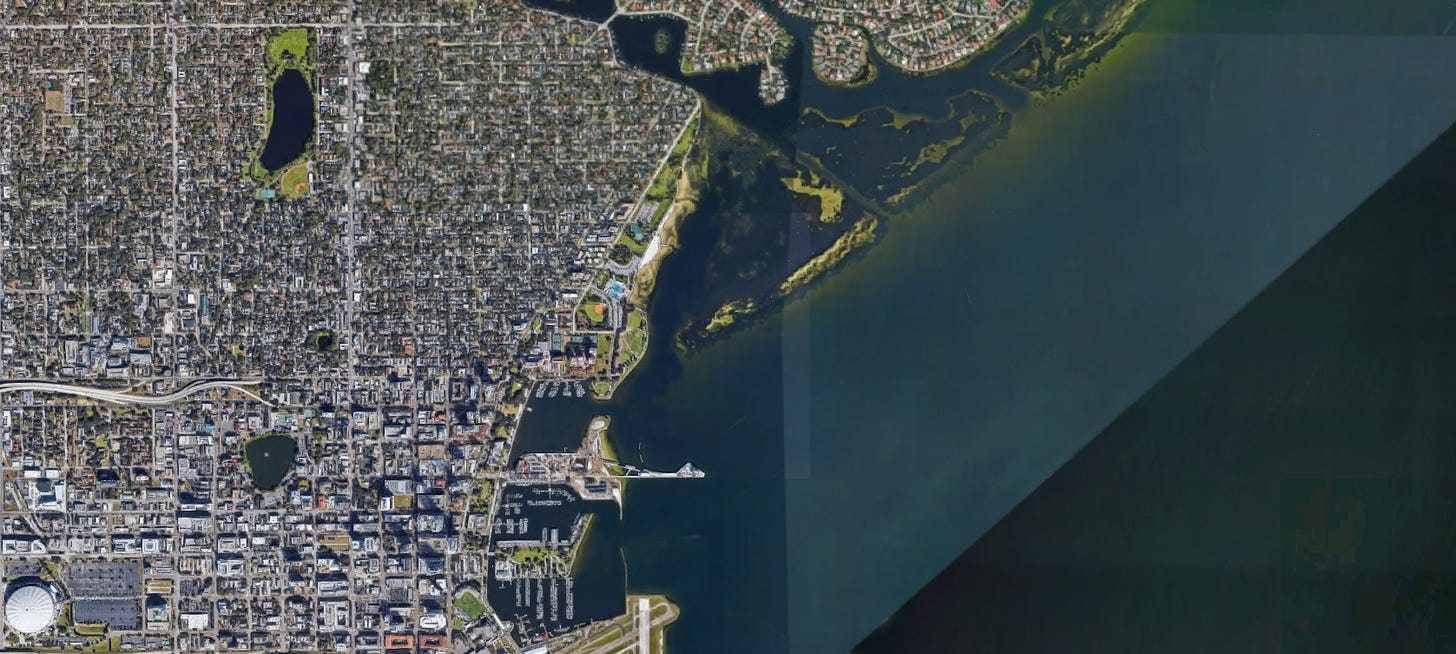
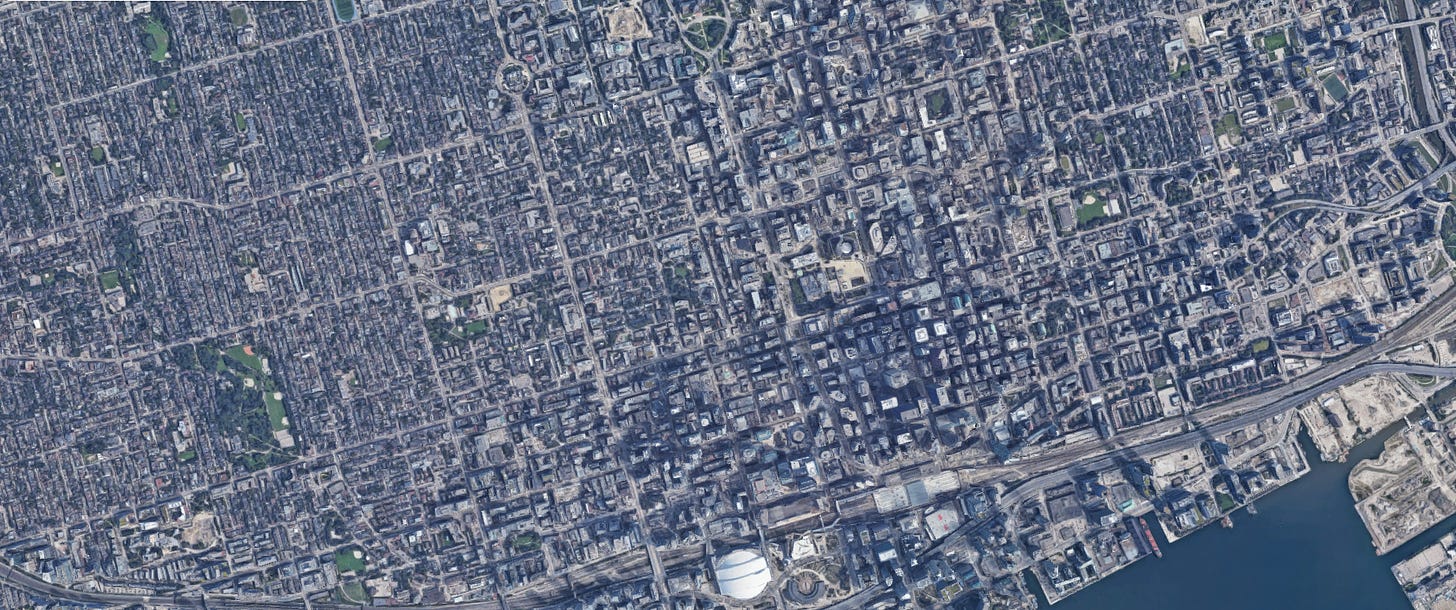
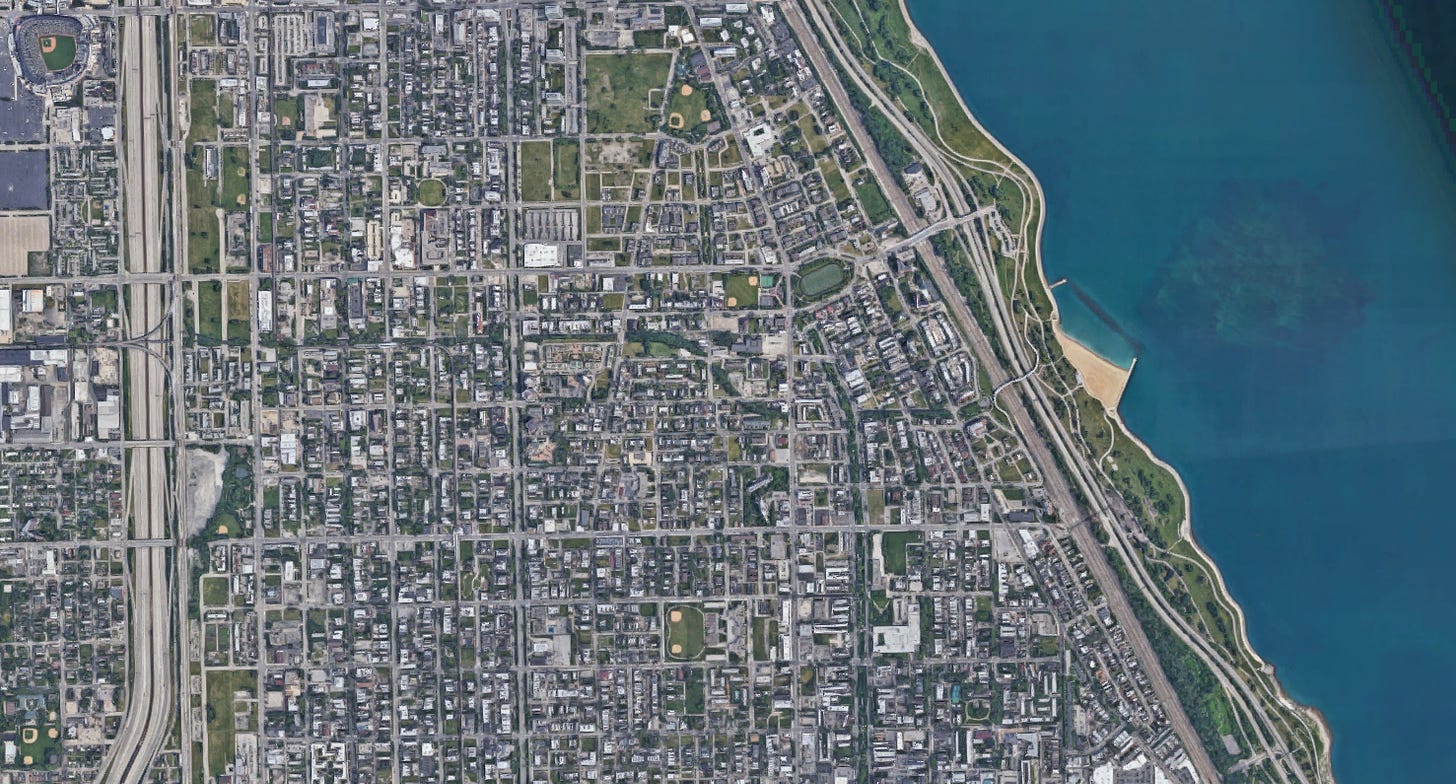
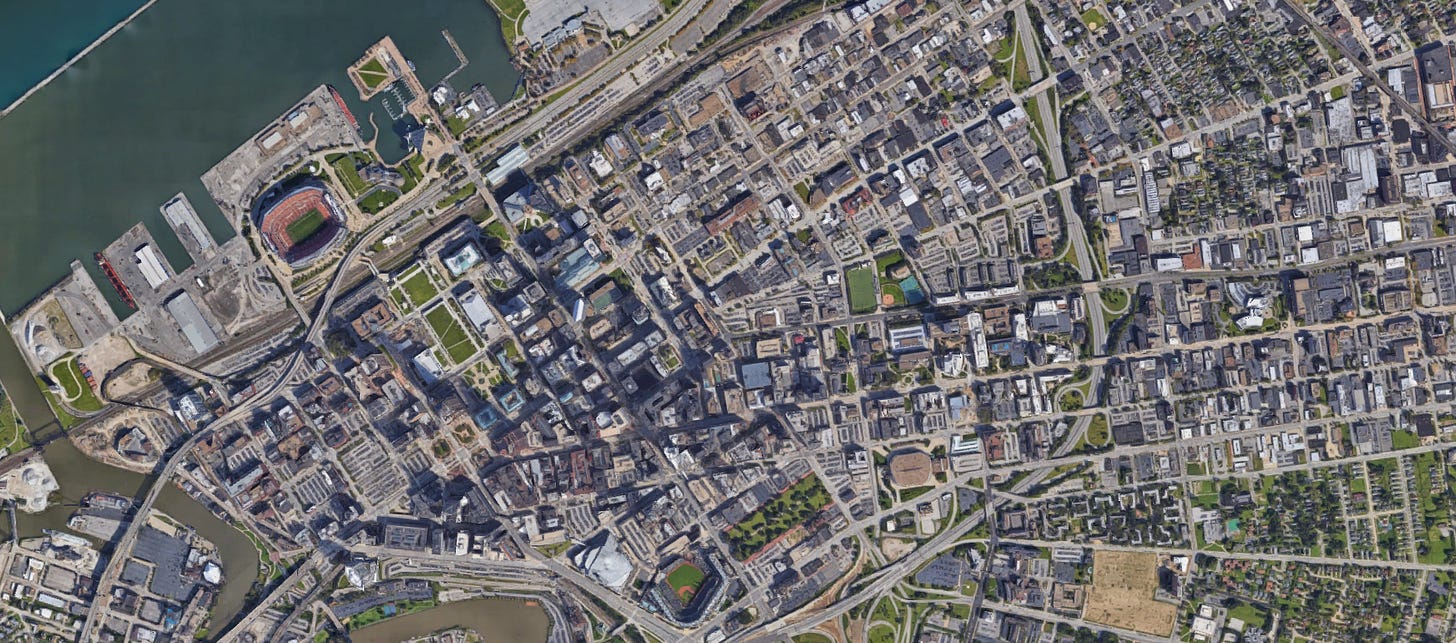
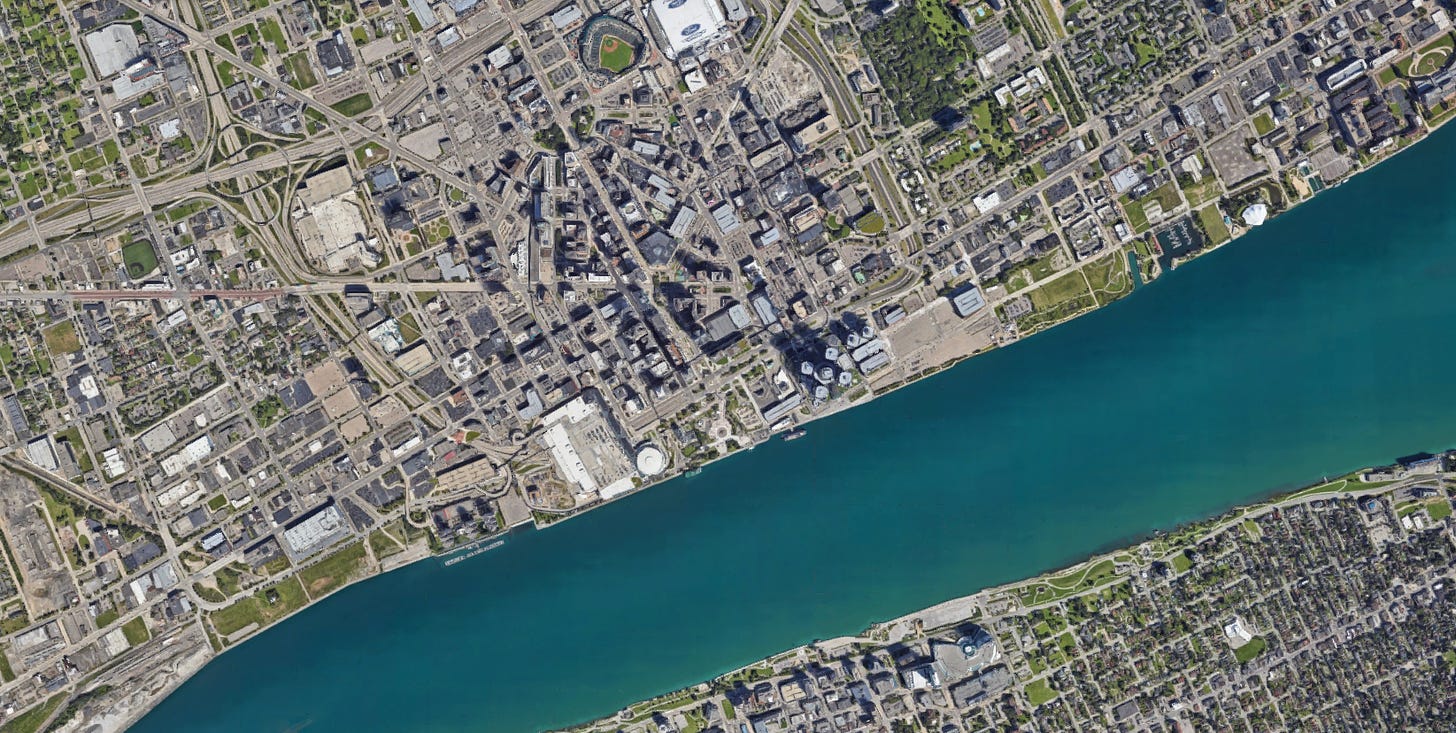
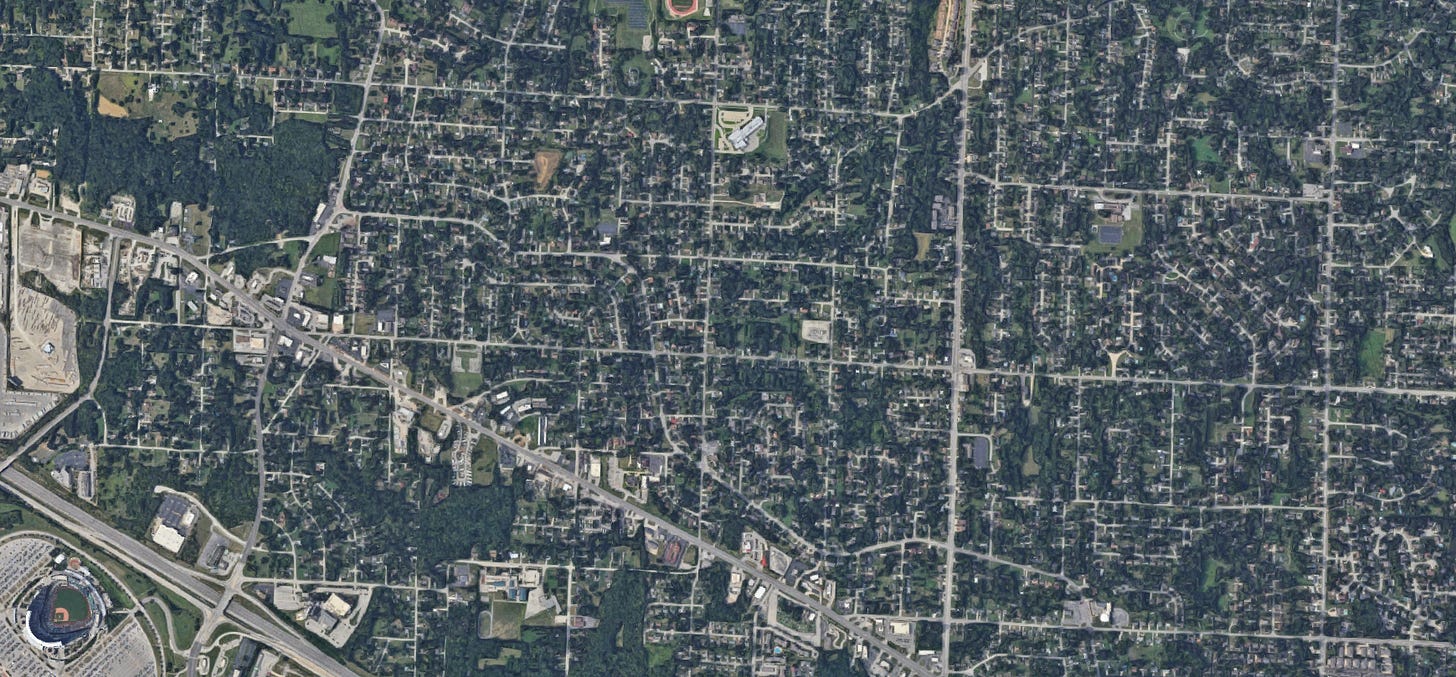
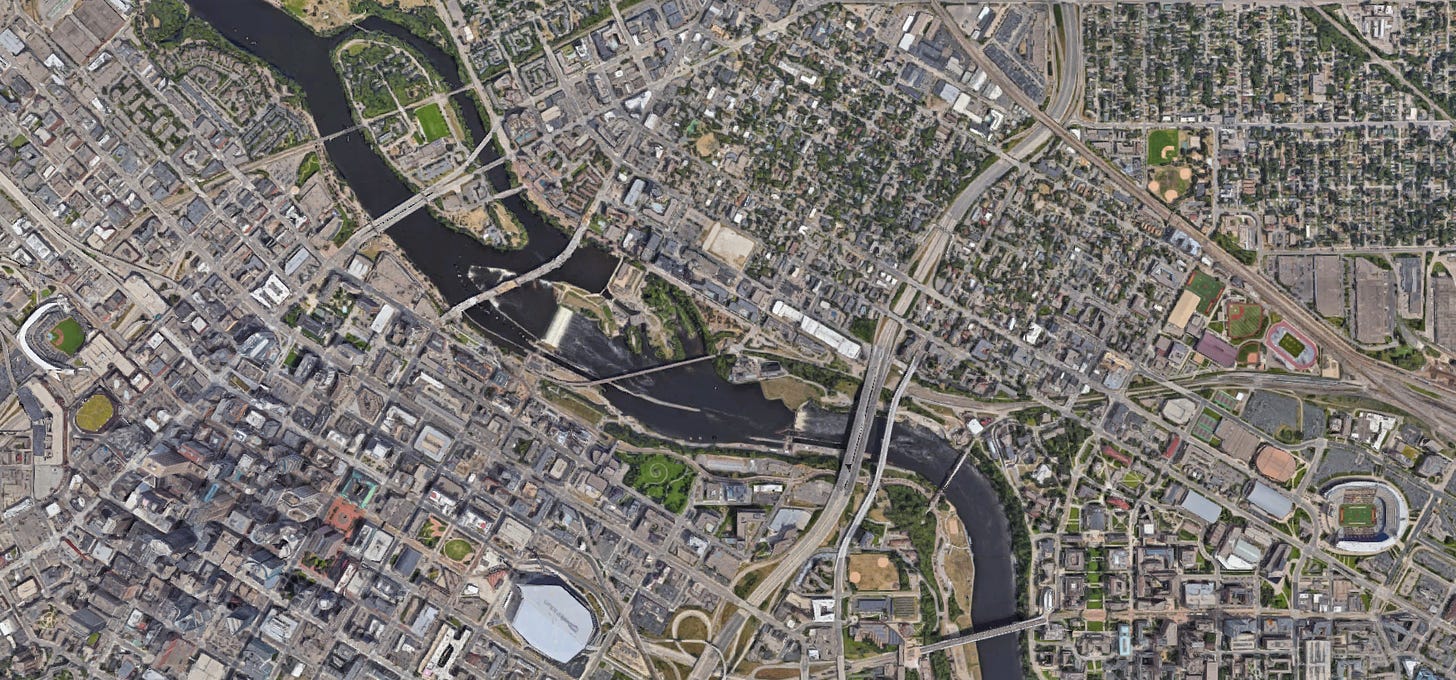
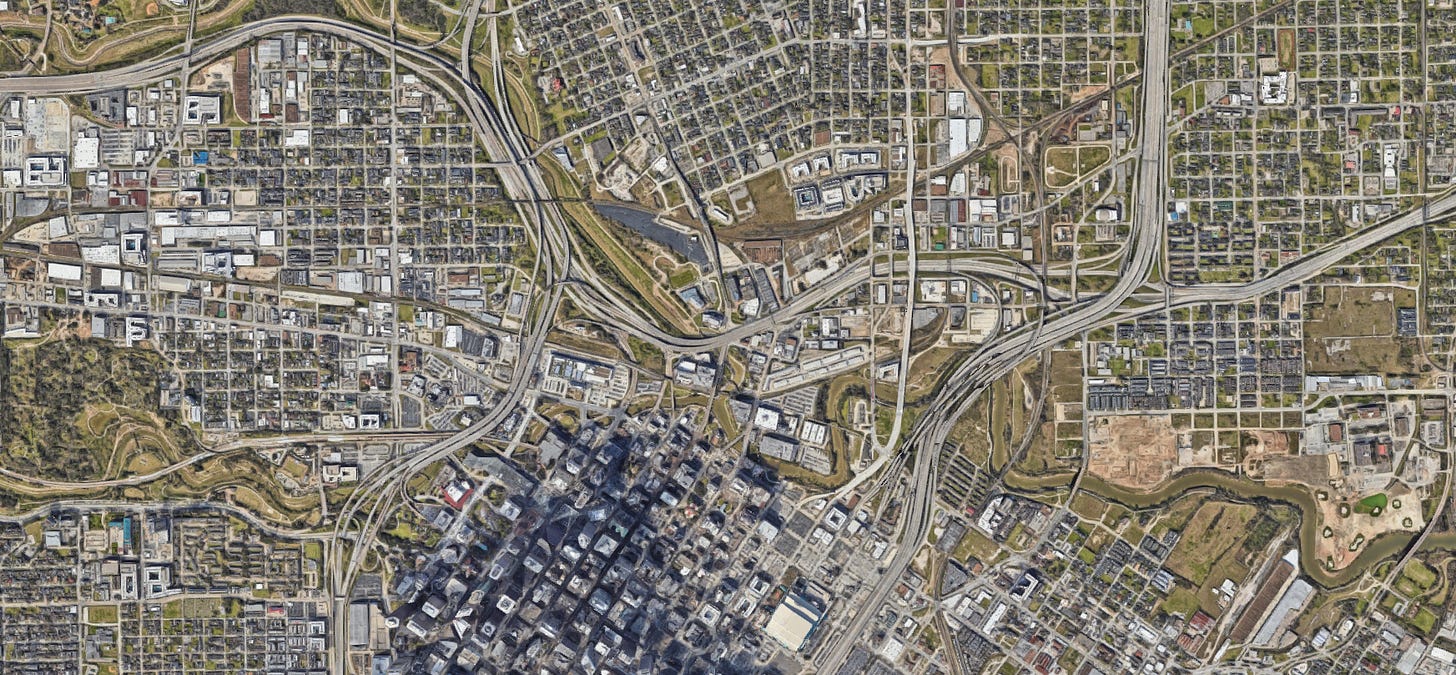
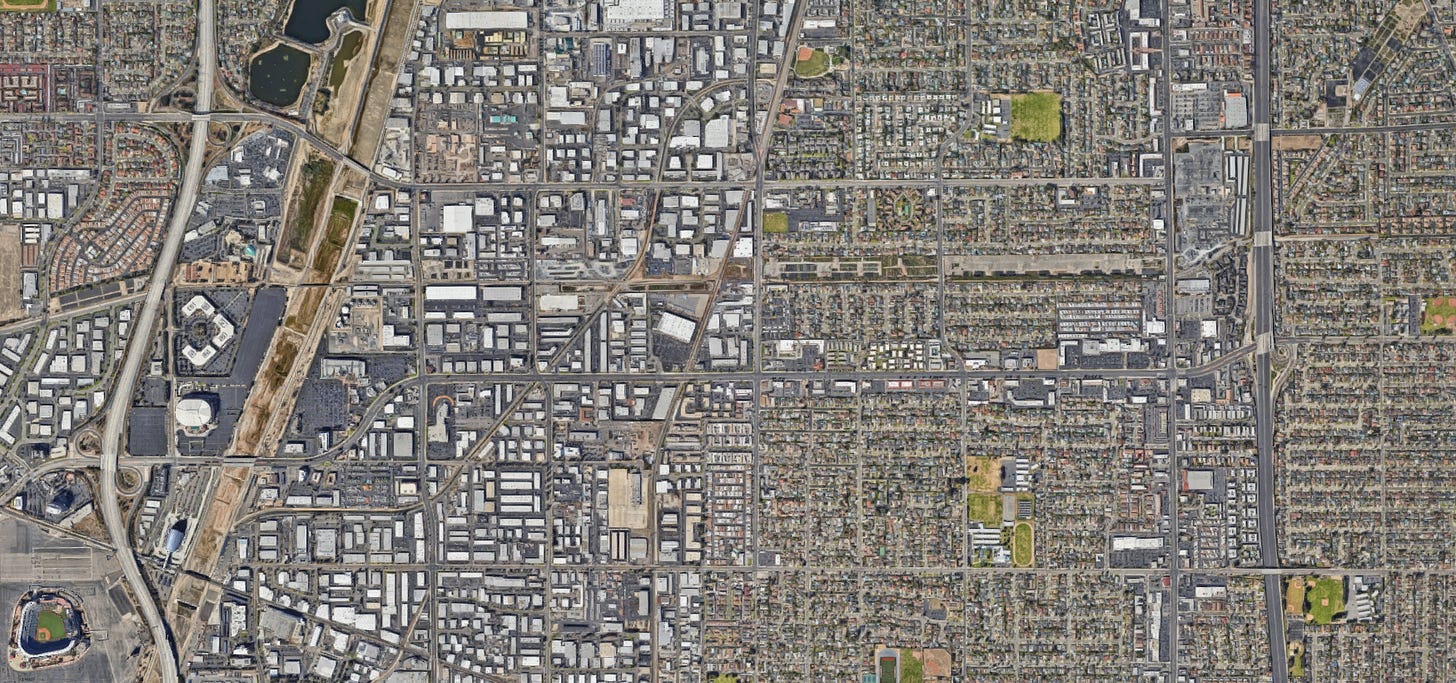
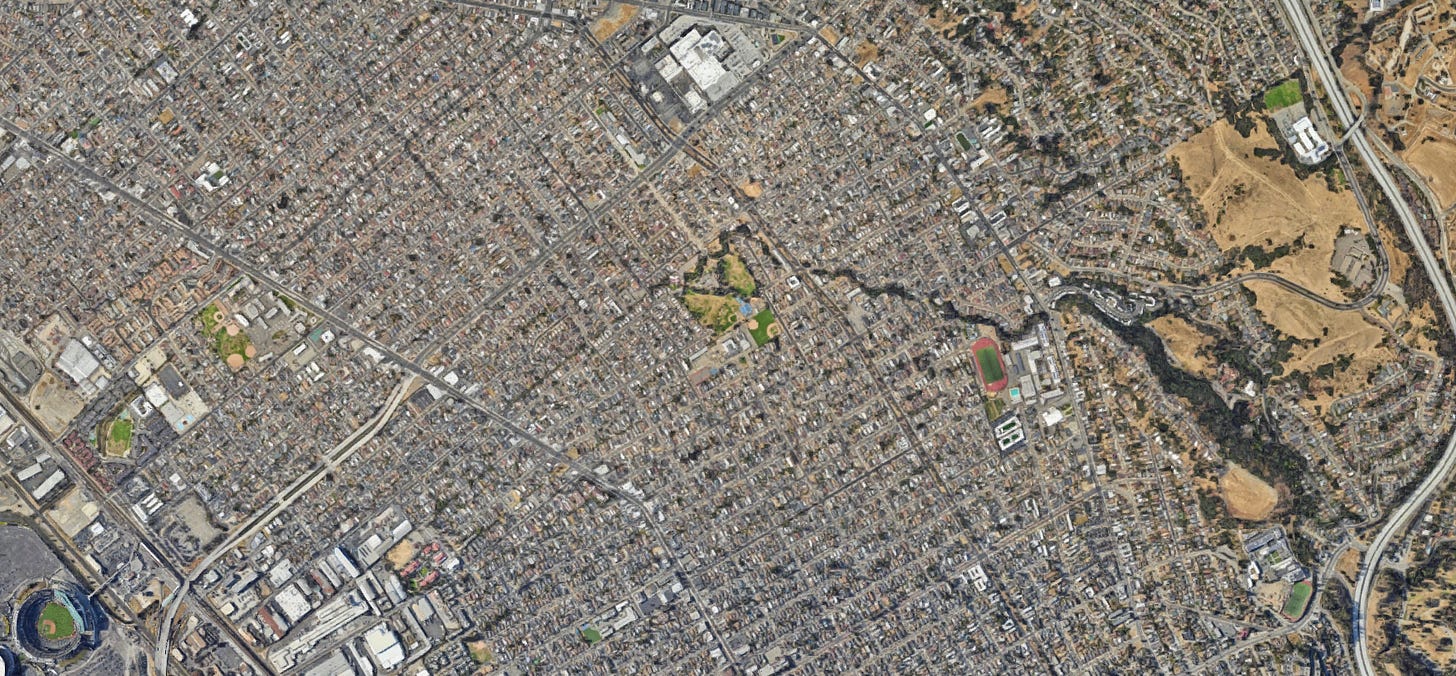
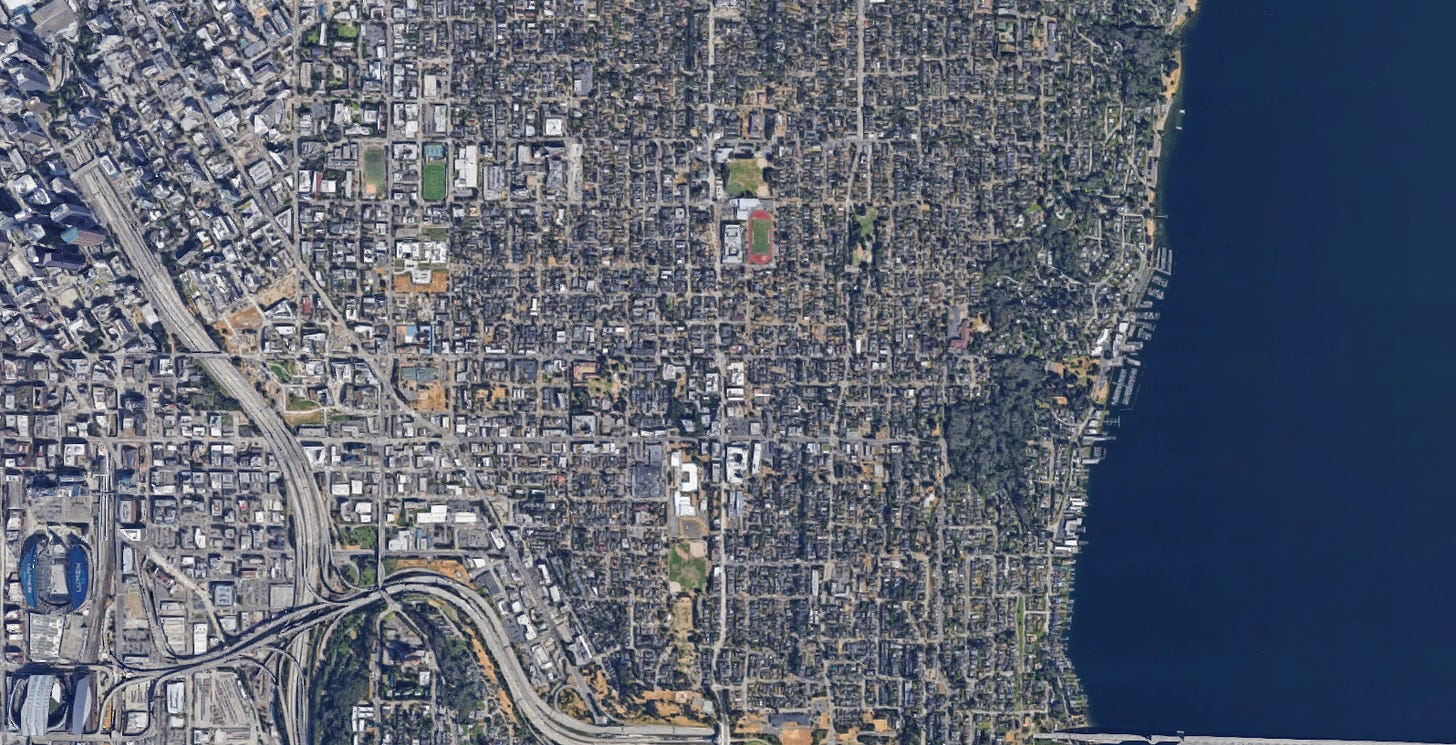
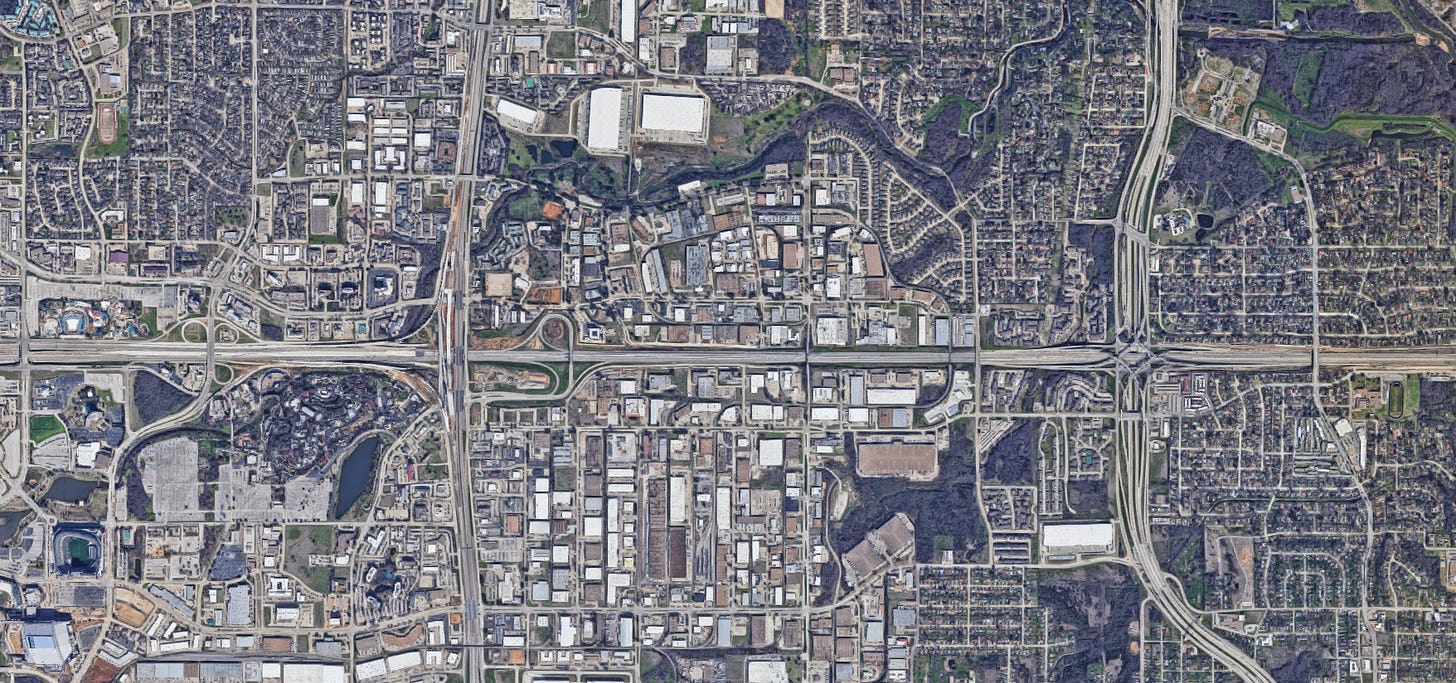
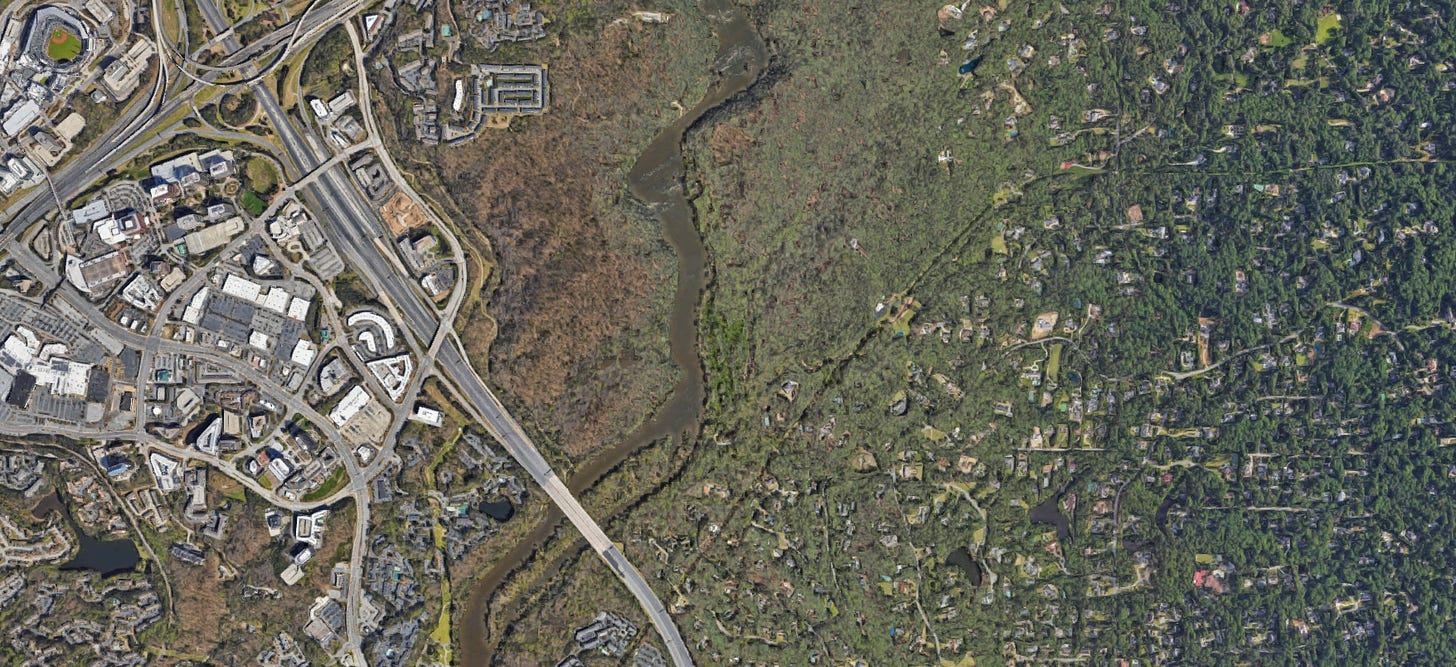
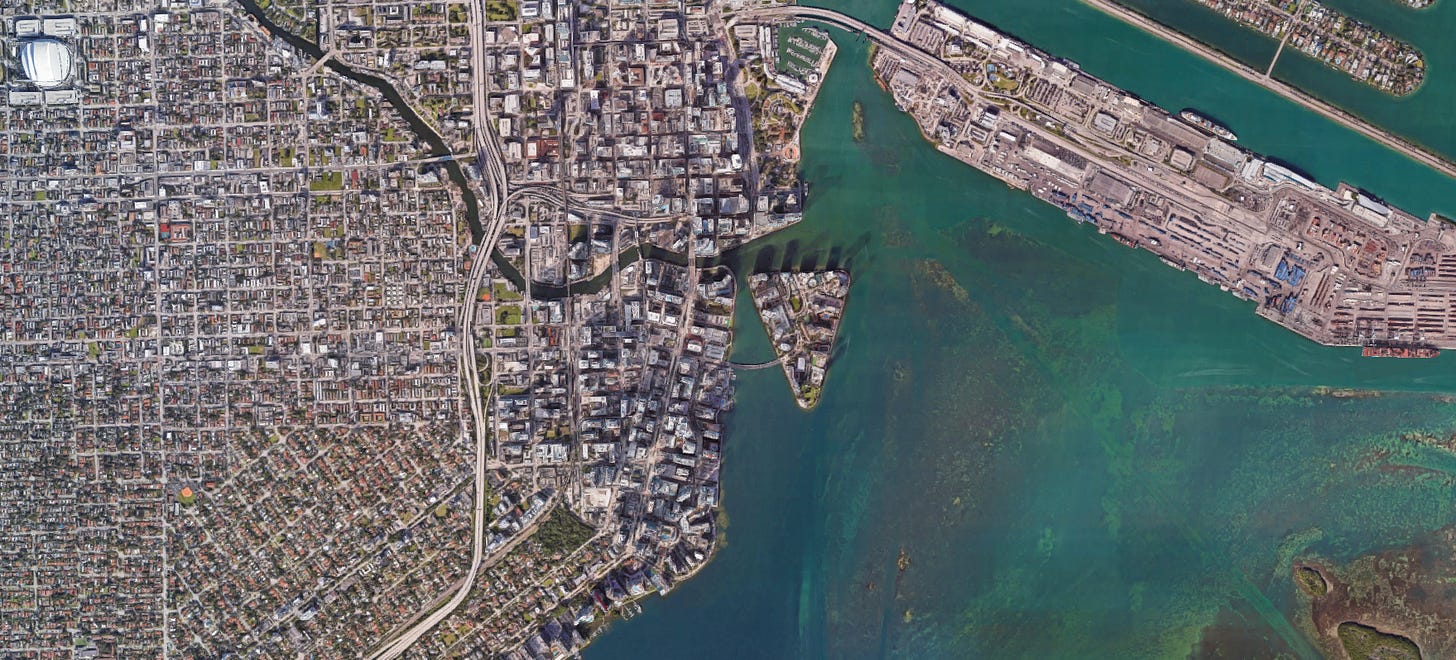
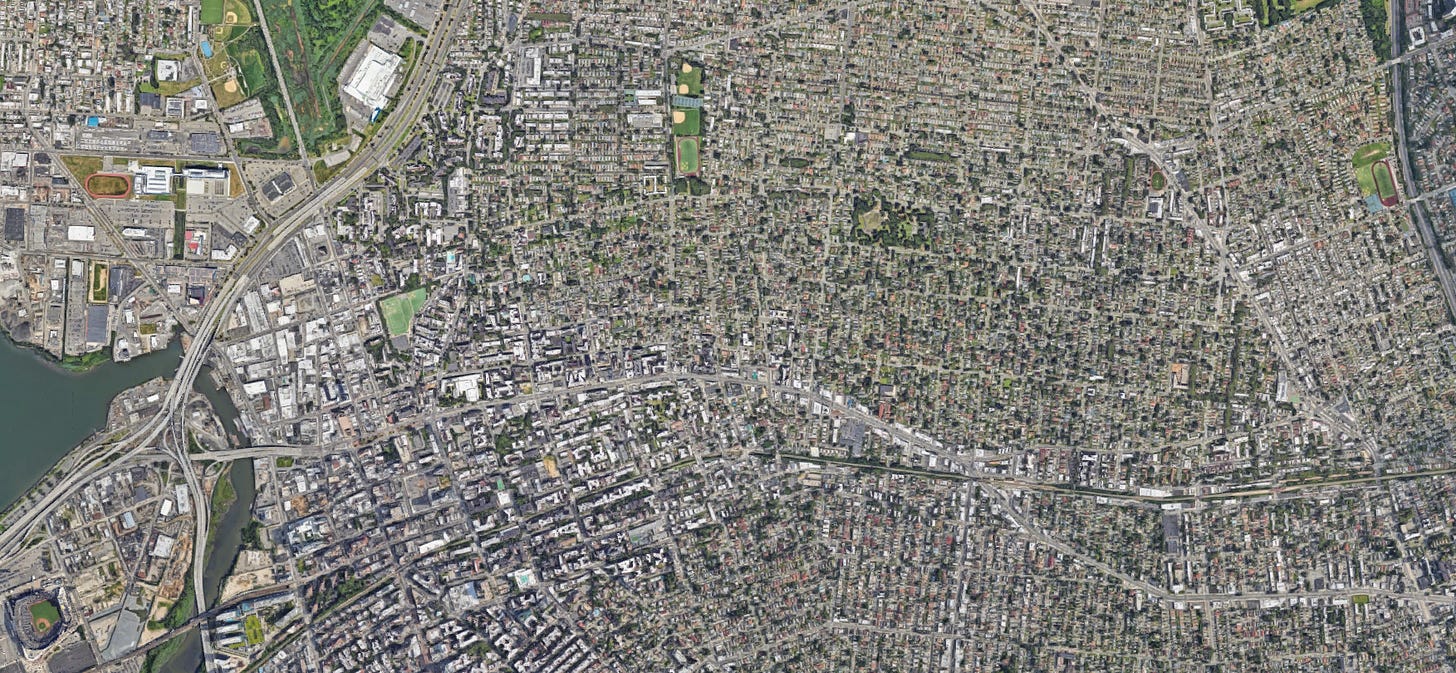
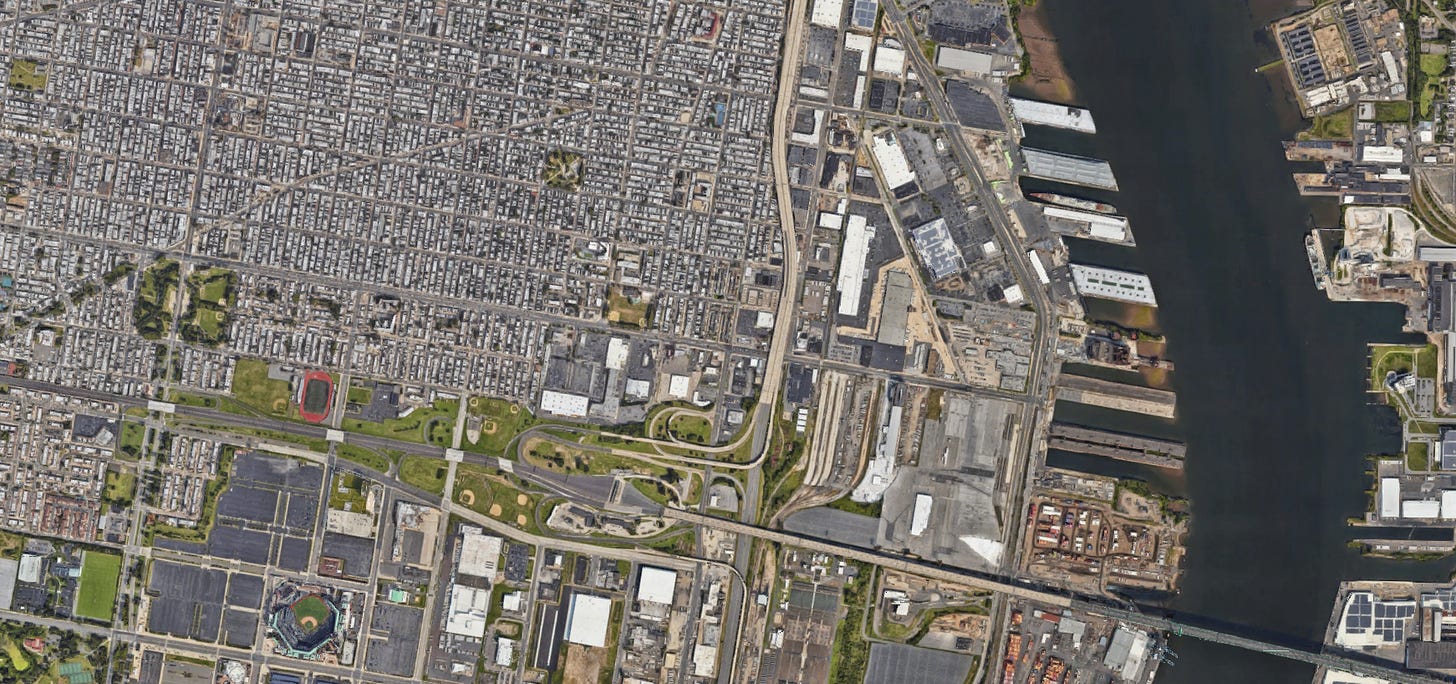
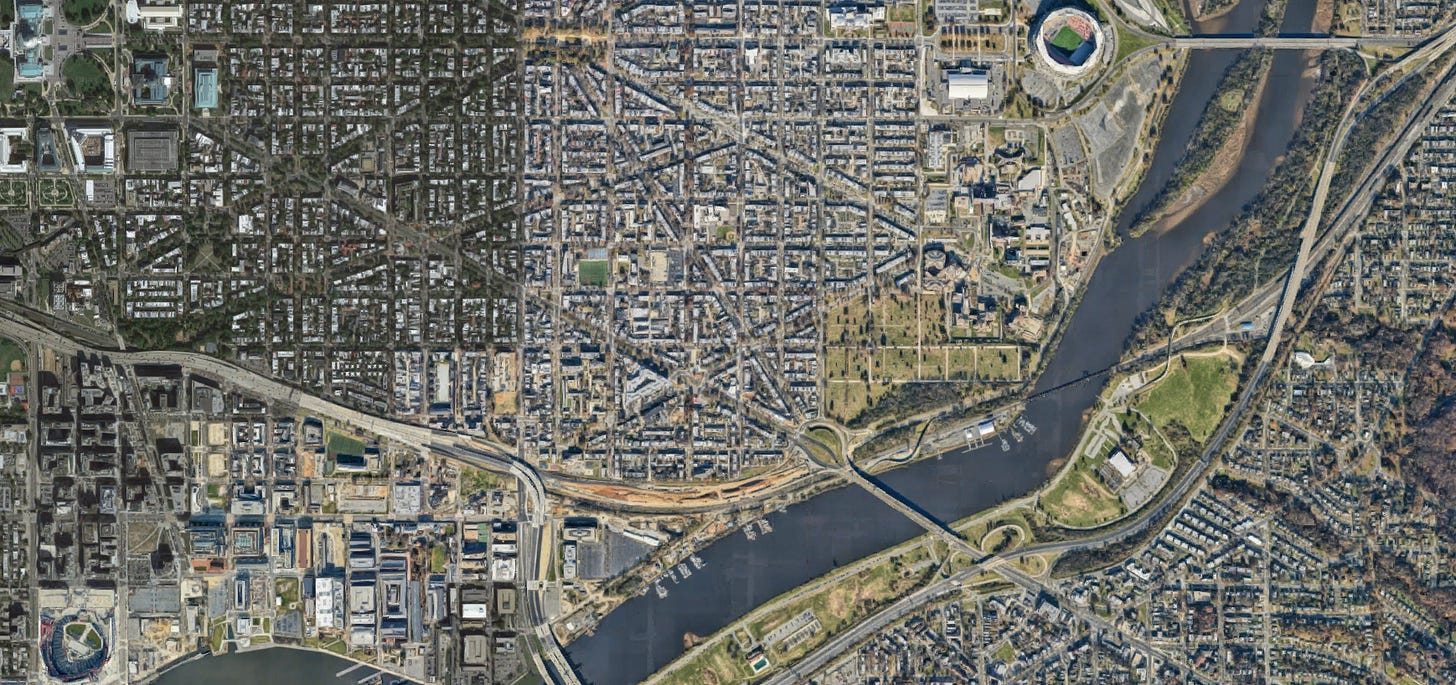
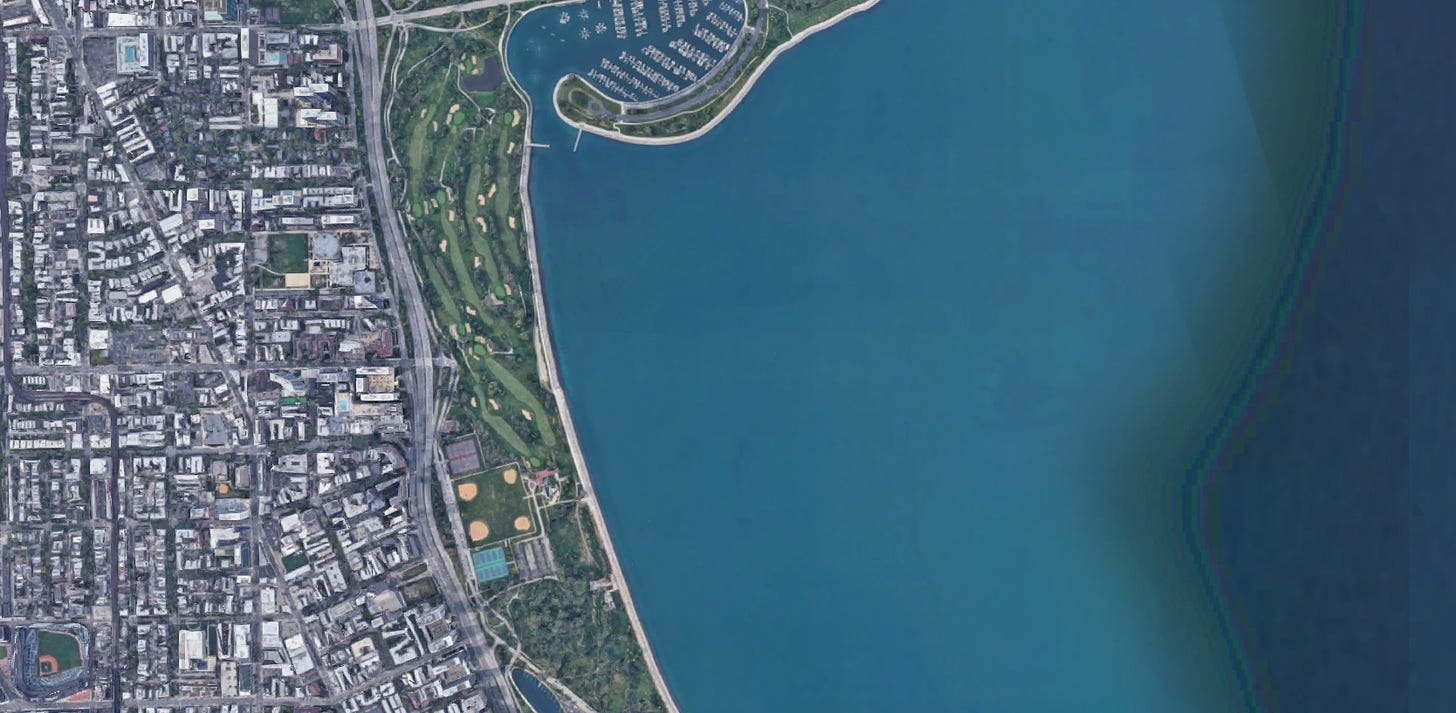
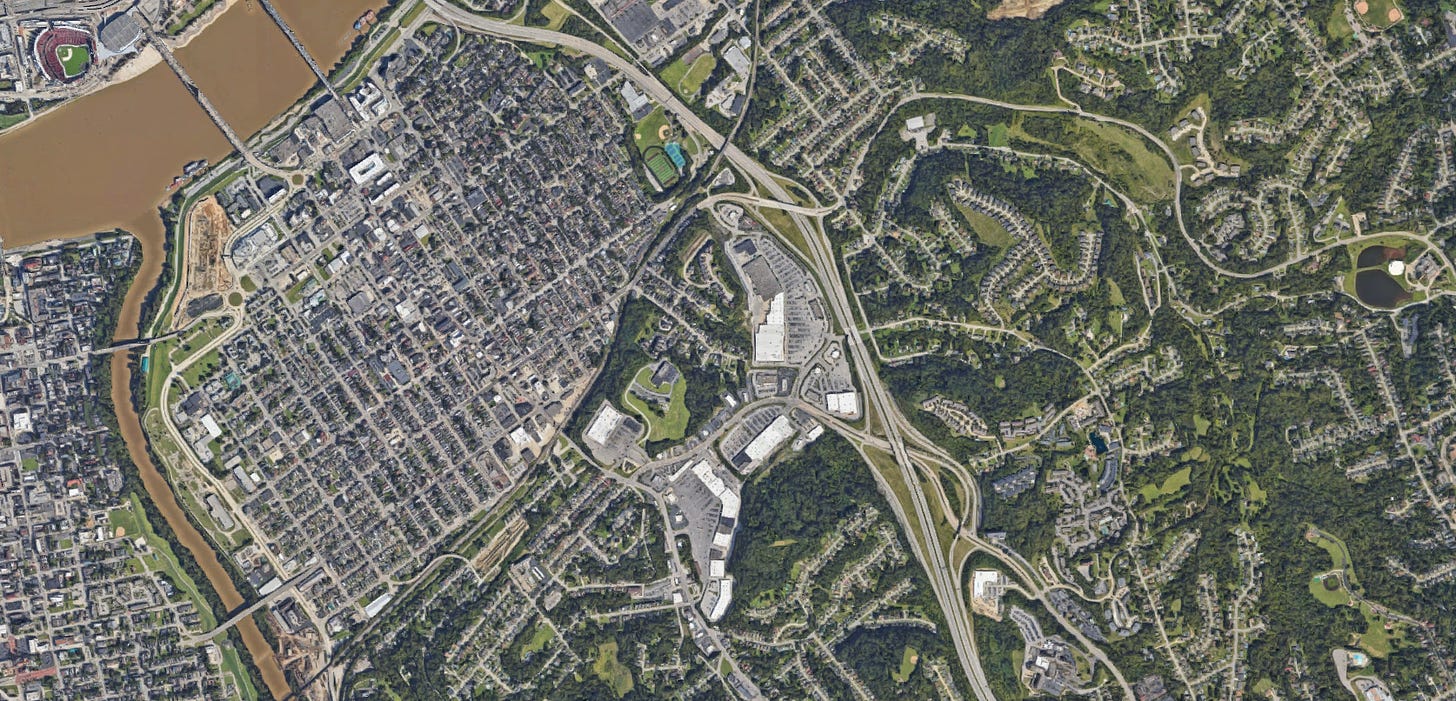
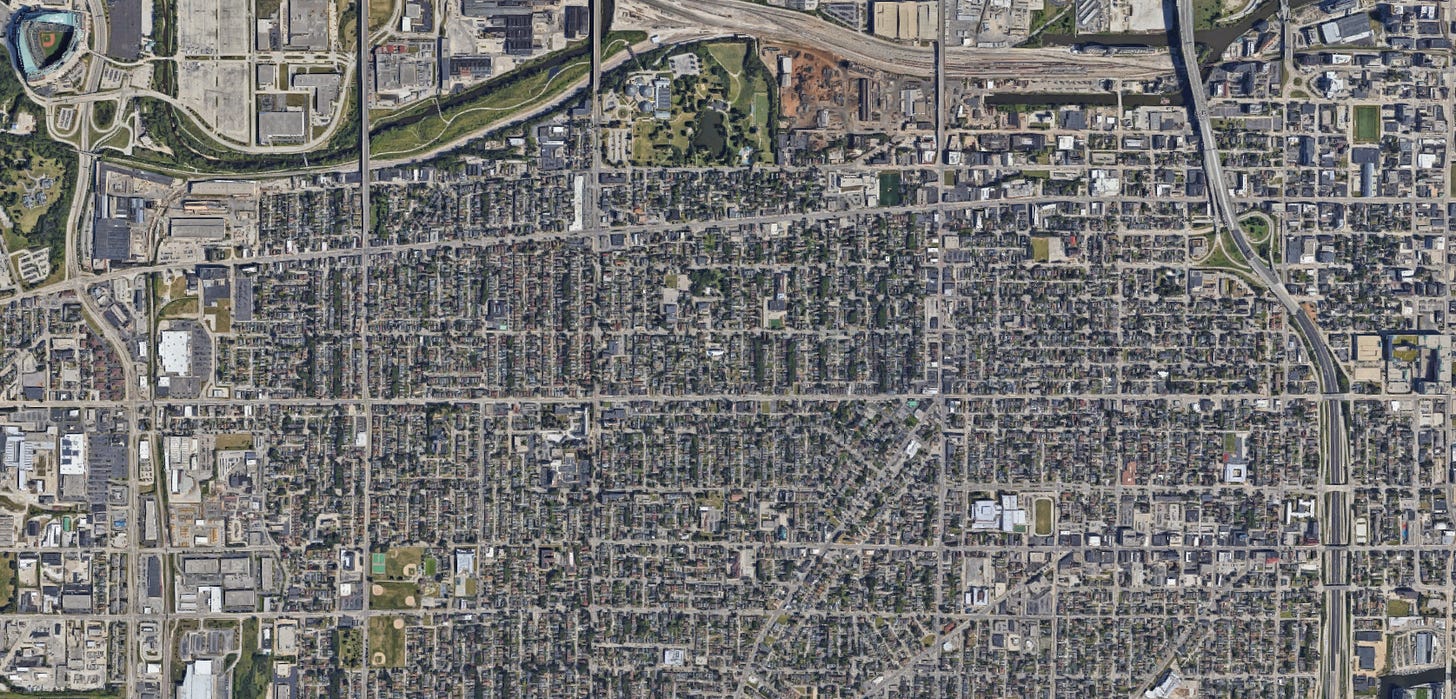
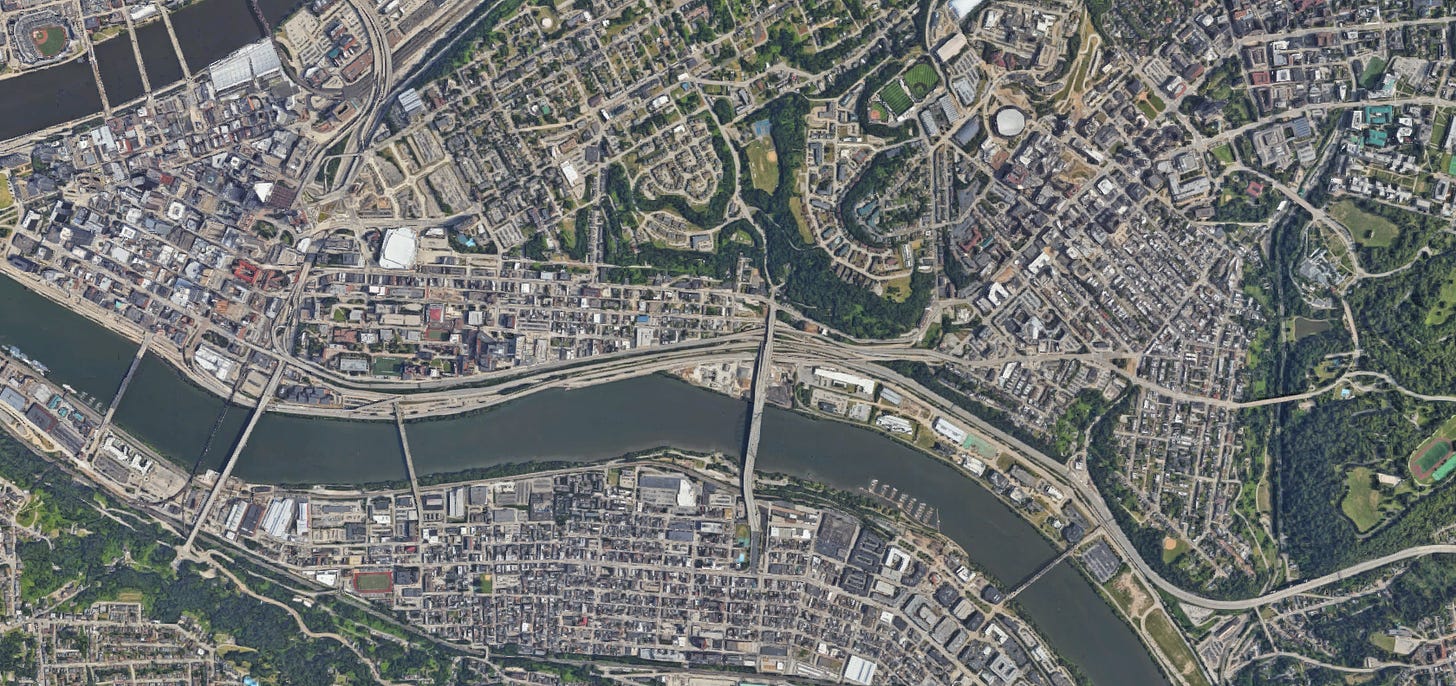
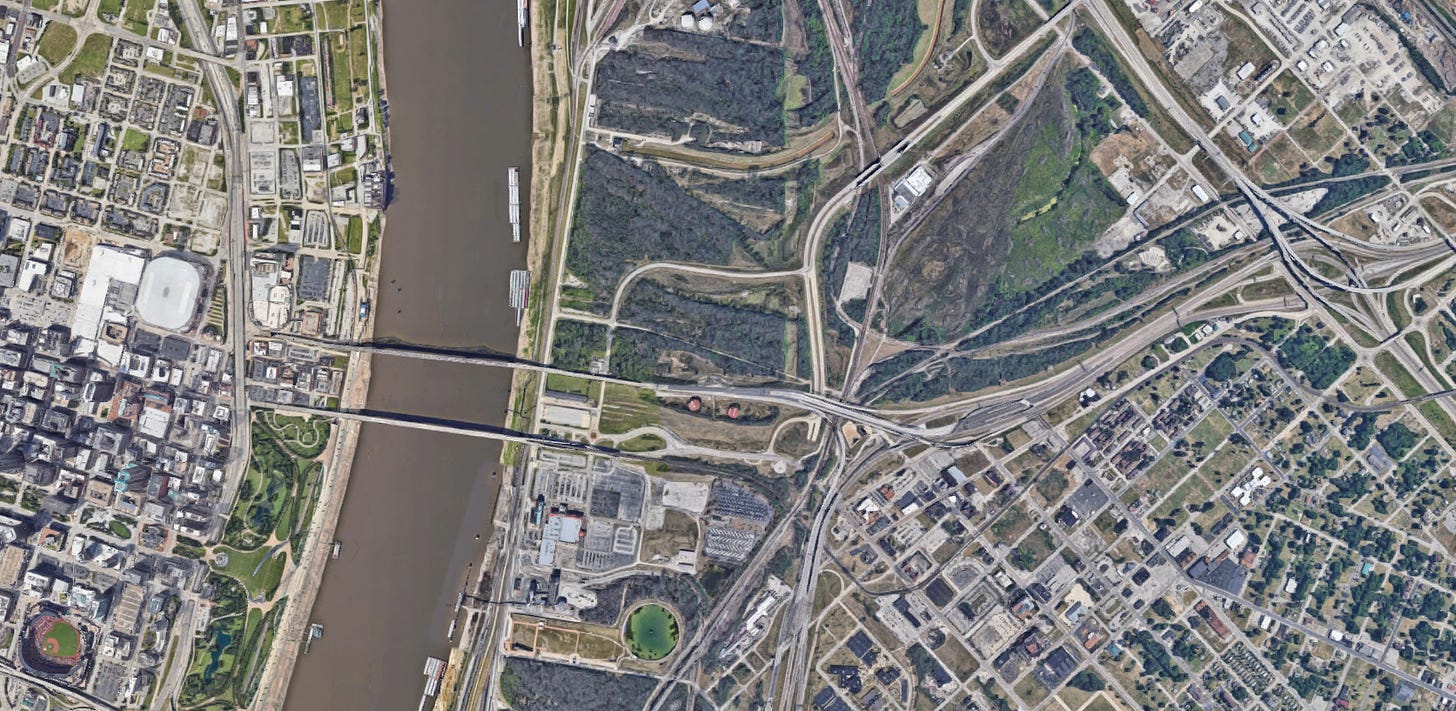

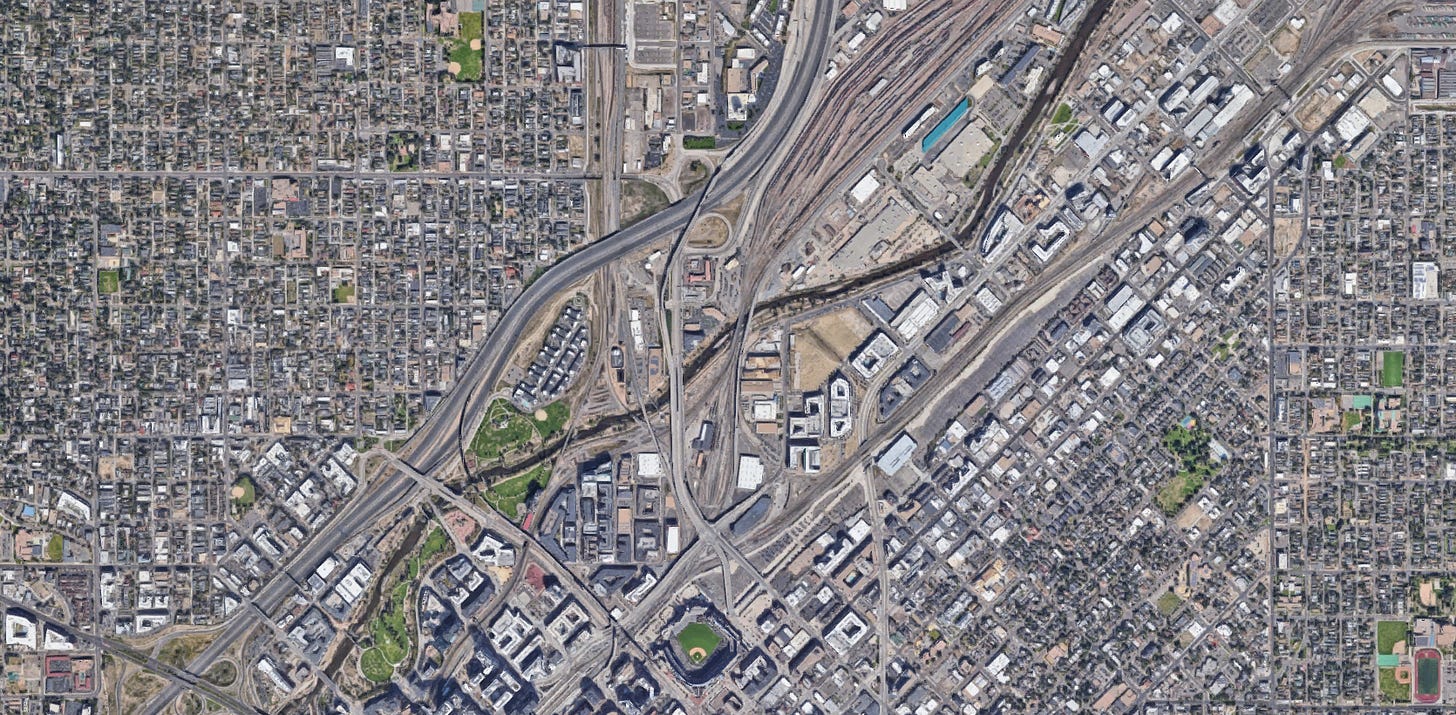
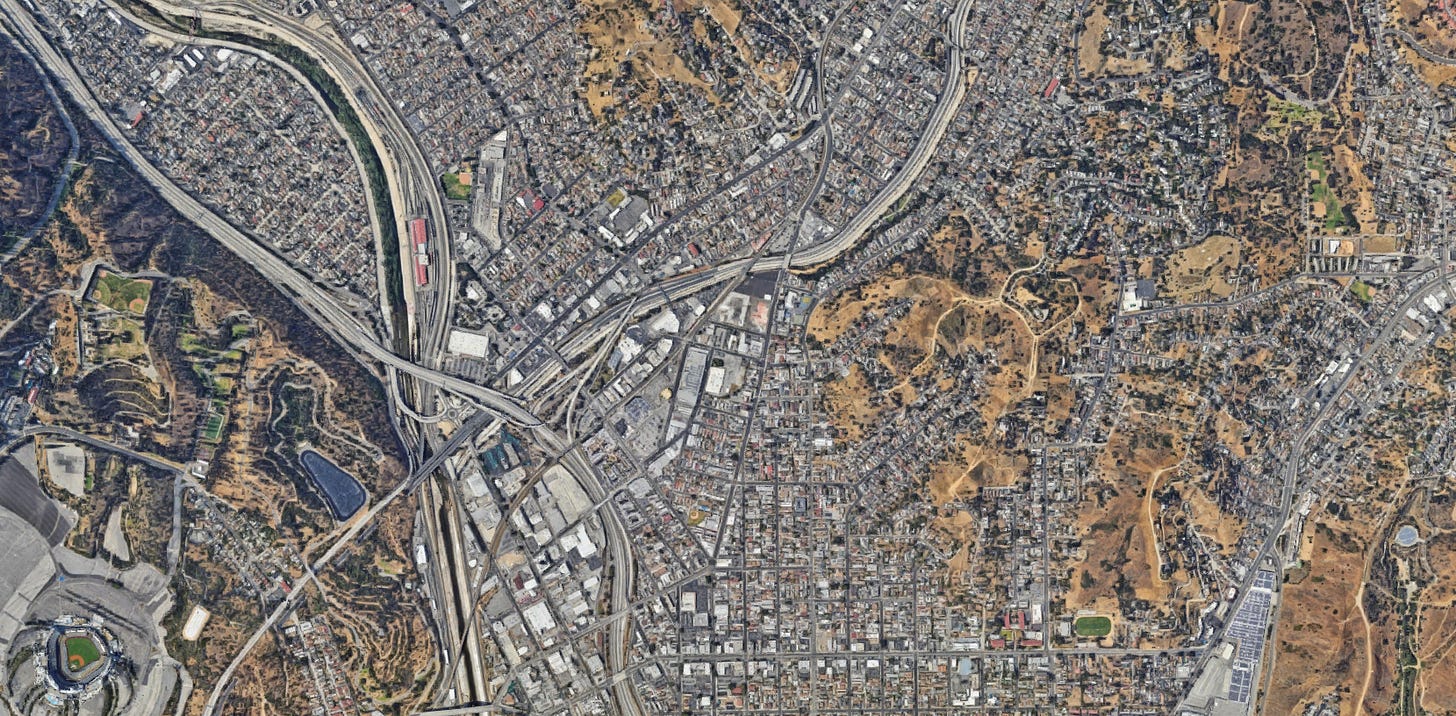
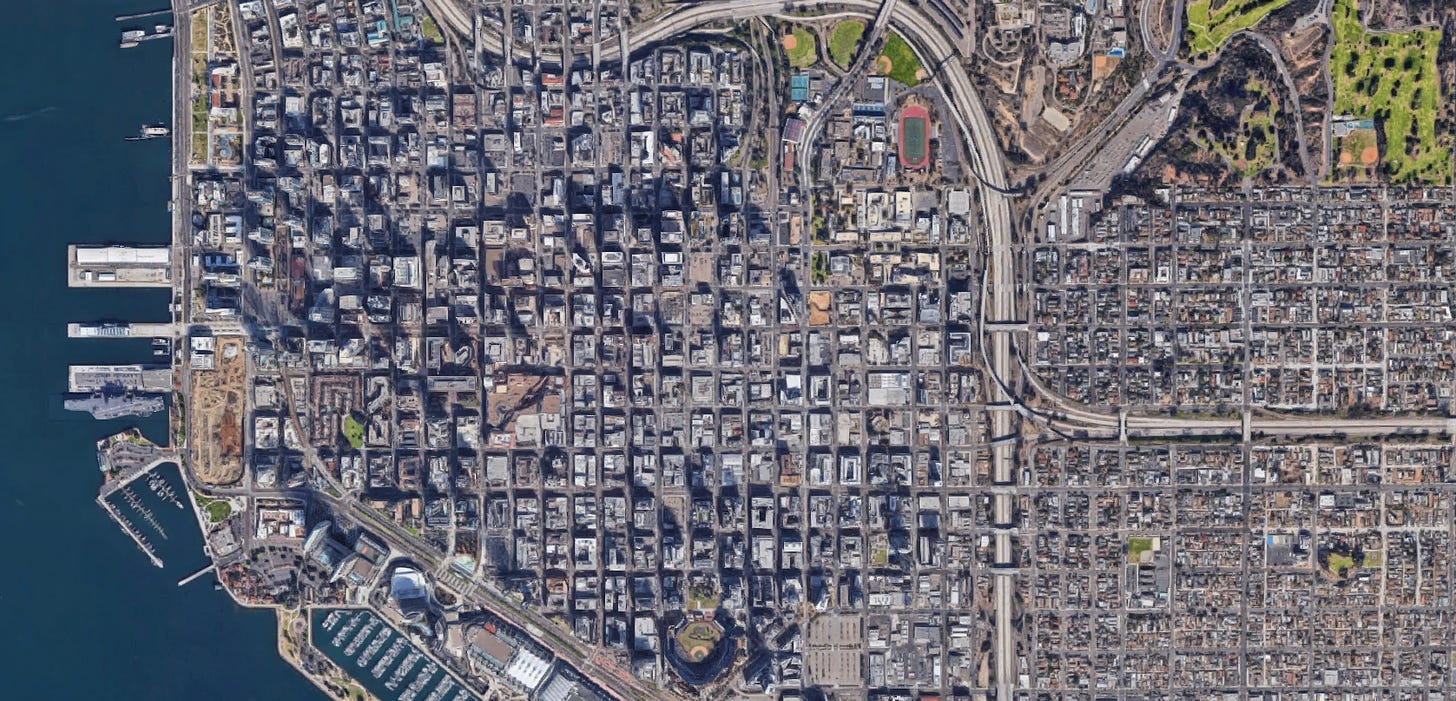
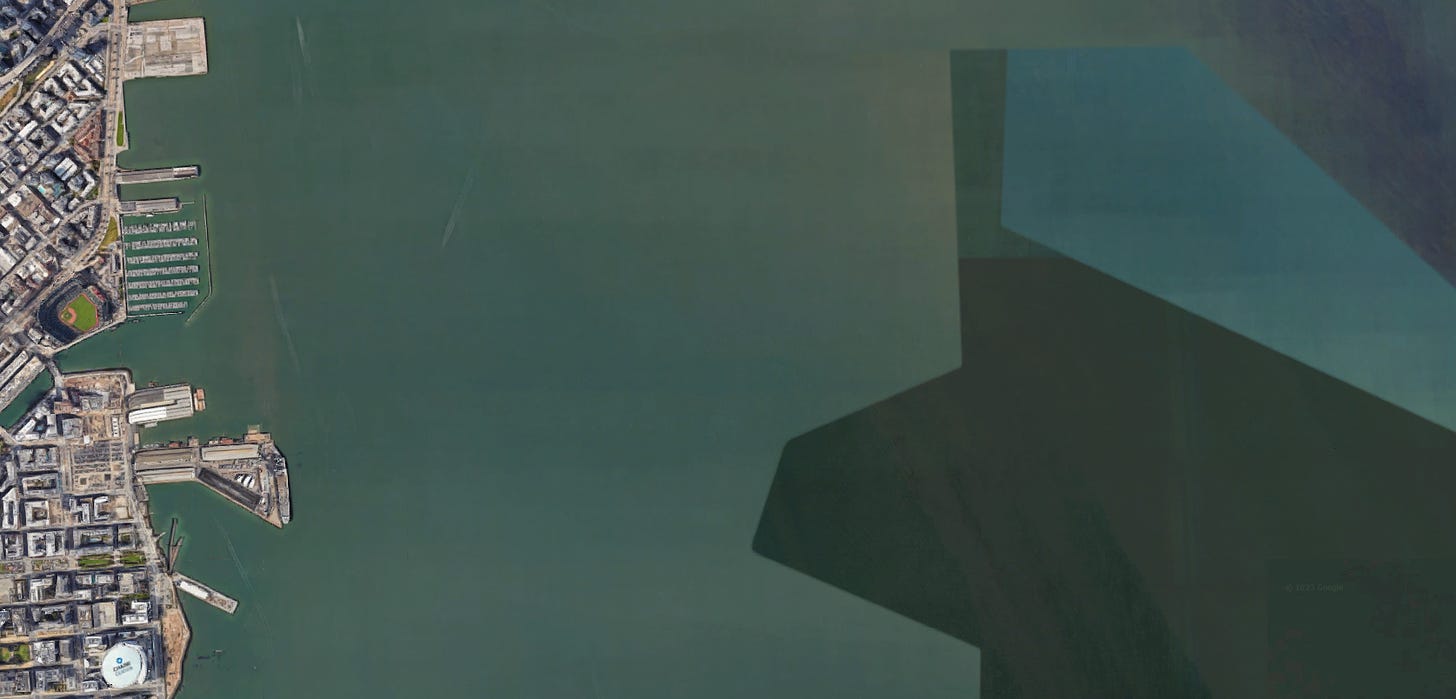
I look forward to your revised Oakland guidance for Howard Terminal in 5 years or so. In the meantime, a hitter with exceptionally lucky timing could hypothetically loft a ball over Mount Davis and through the open doors of a southbound BART train. Northbound would require a bizarre ricochet.
a The Low Major article inspired by THE Dave Sims? Well, yea, it was cause he screwed up, but I can ignore that part. Thank you for telling me where Kelenic is going to hit his next home homer (to the International District)